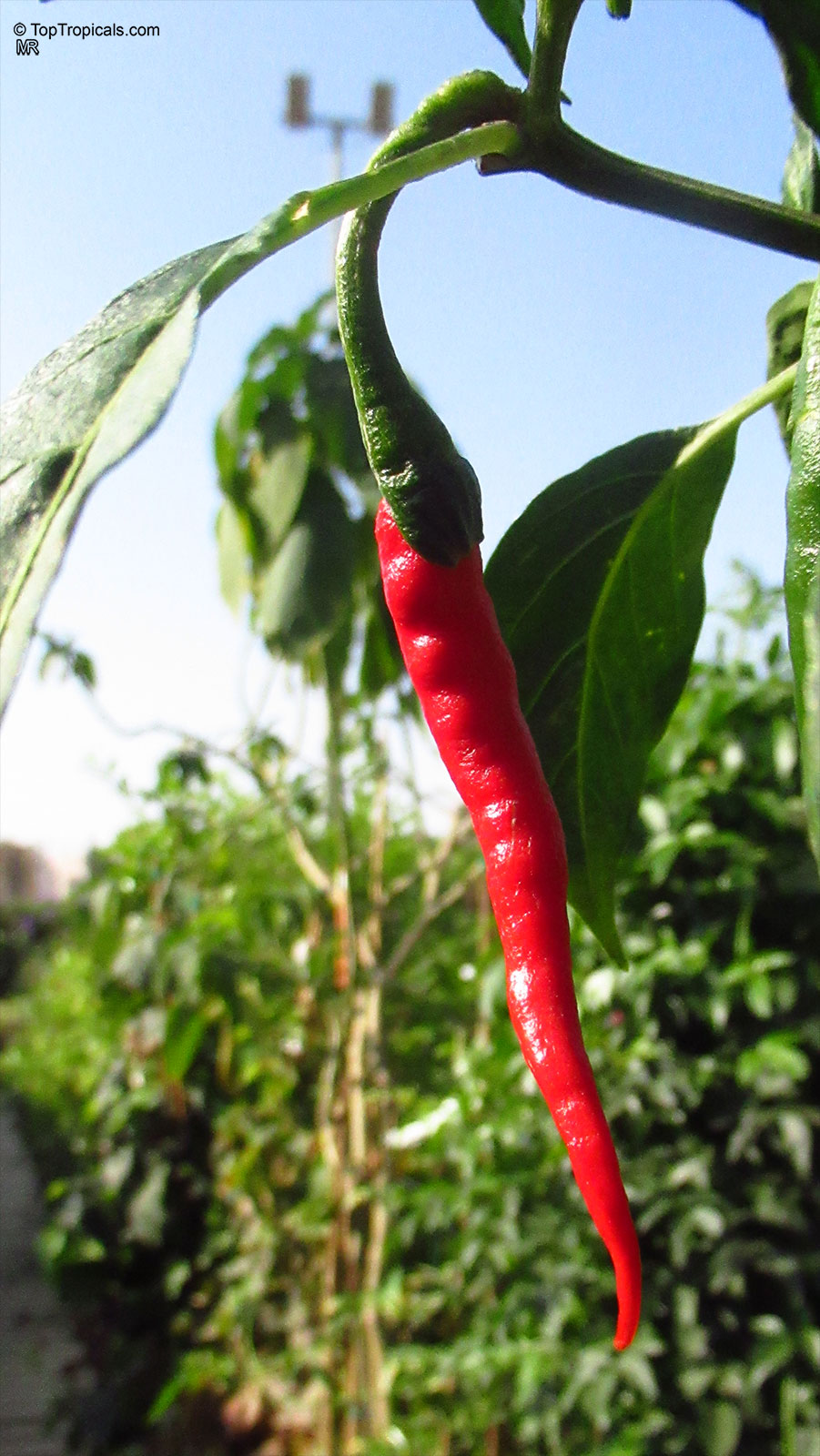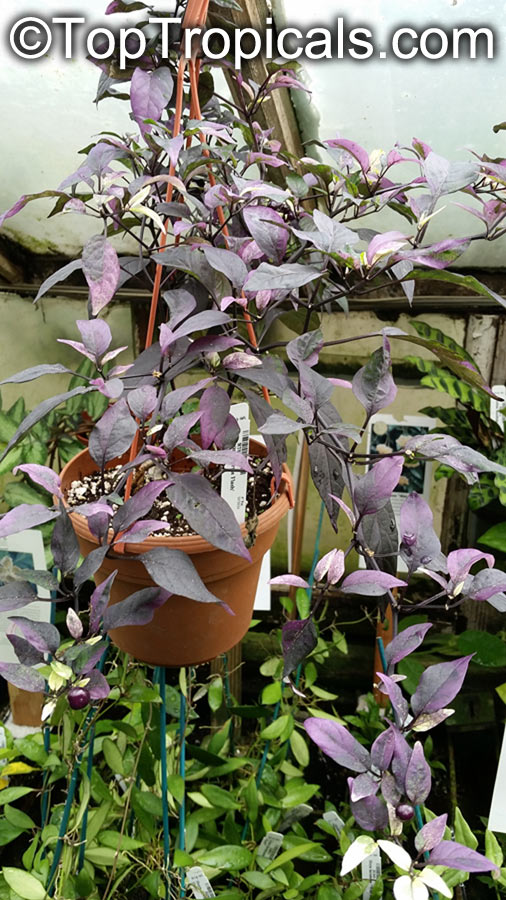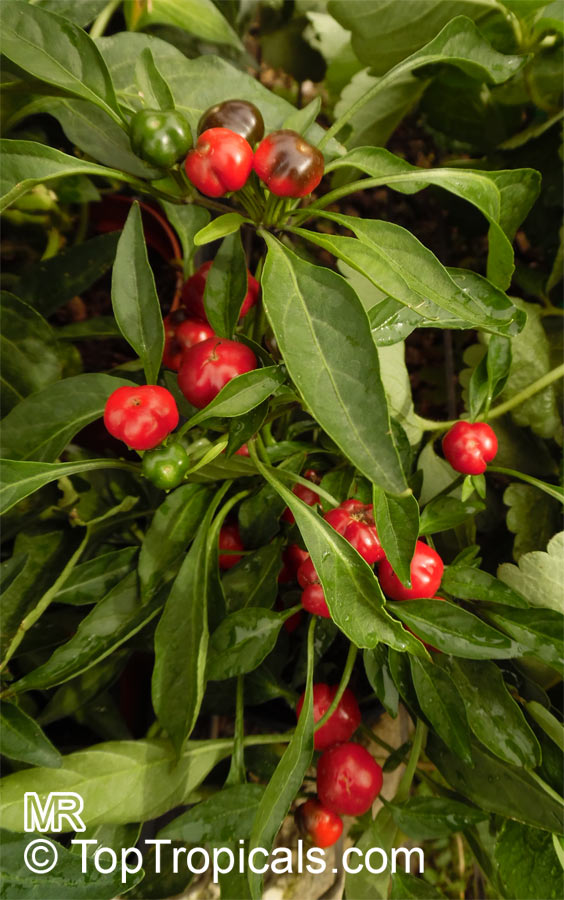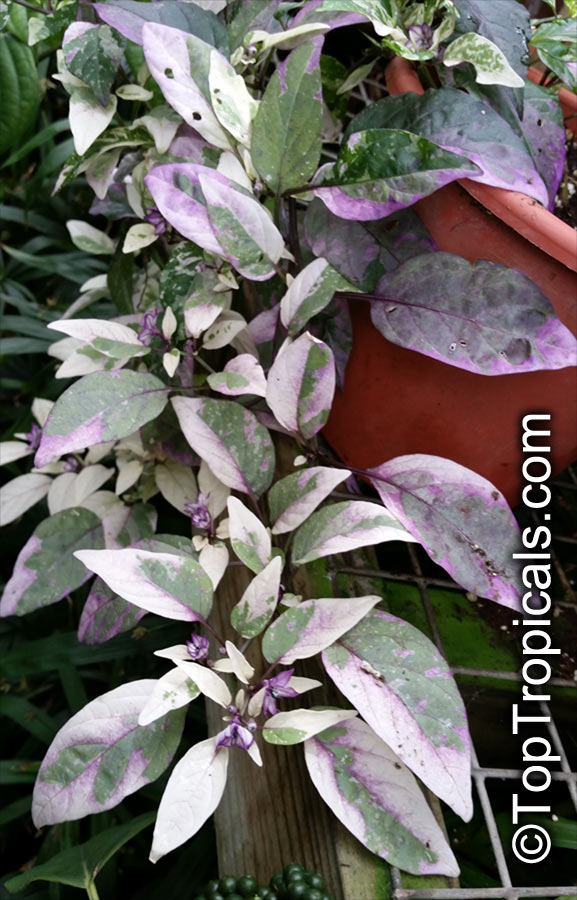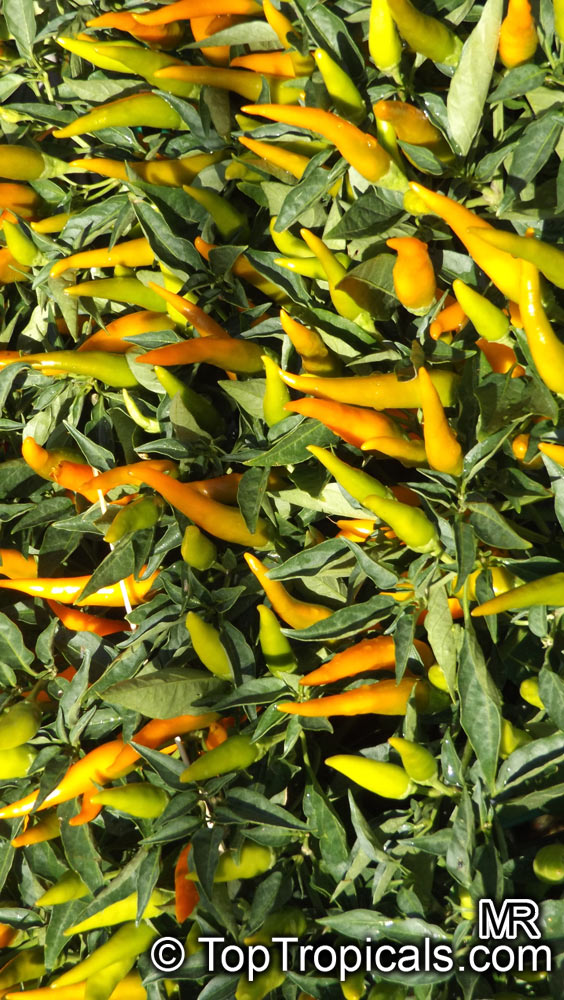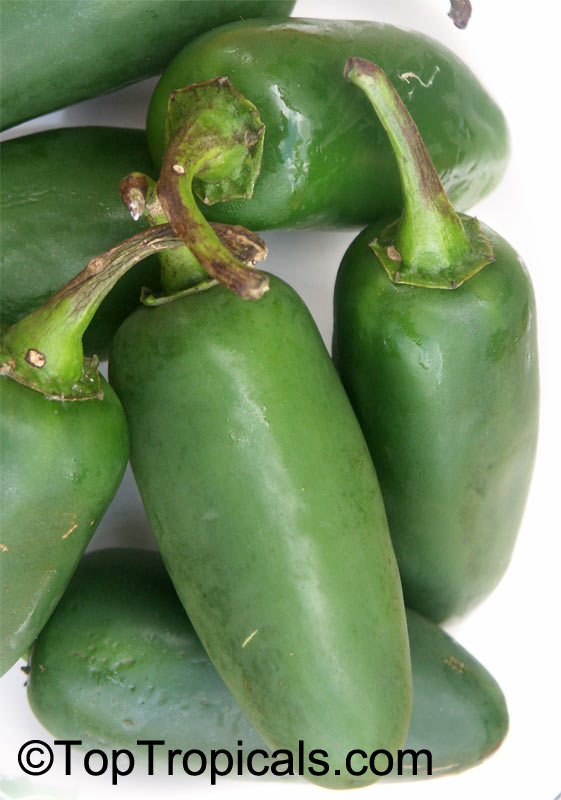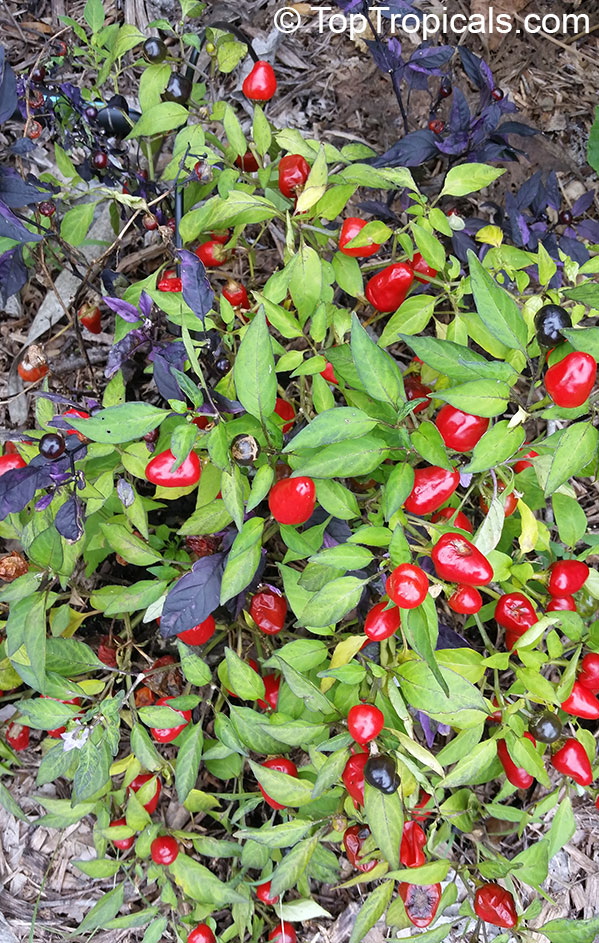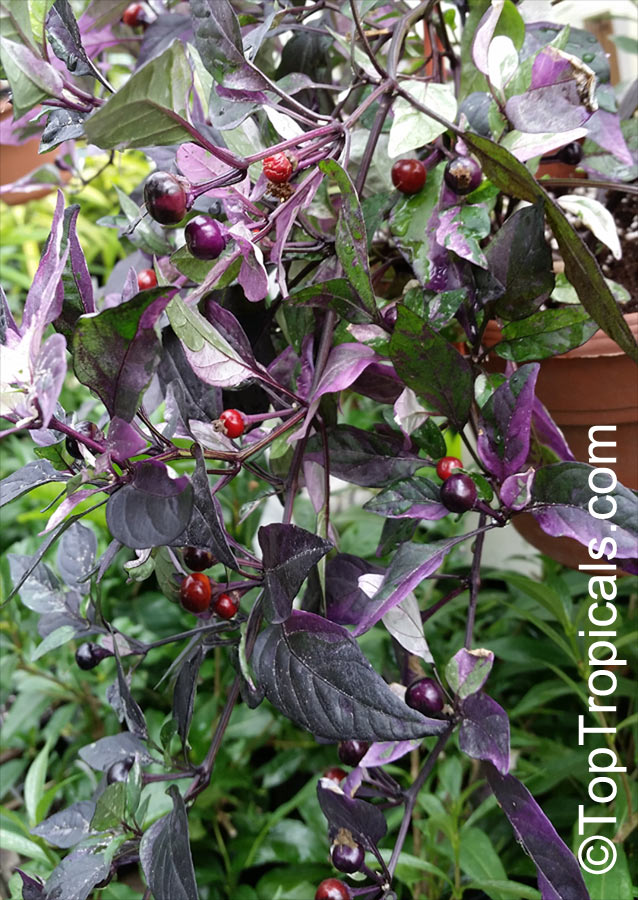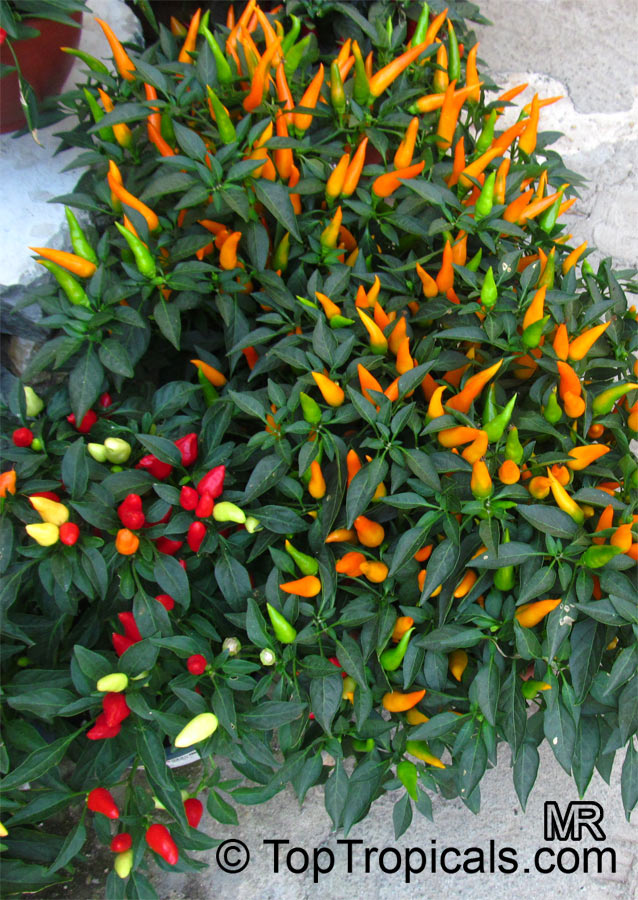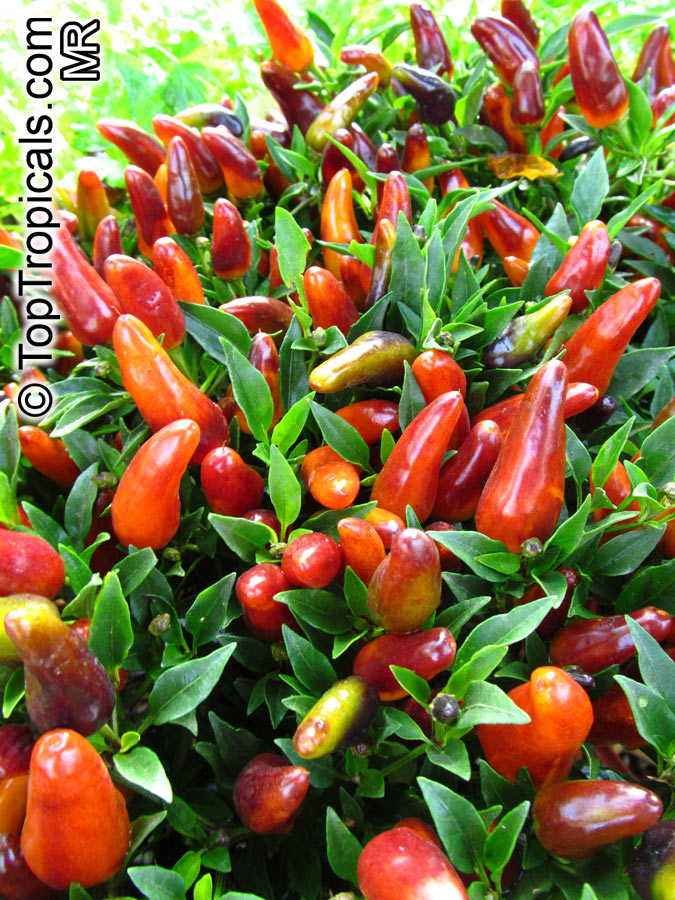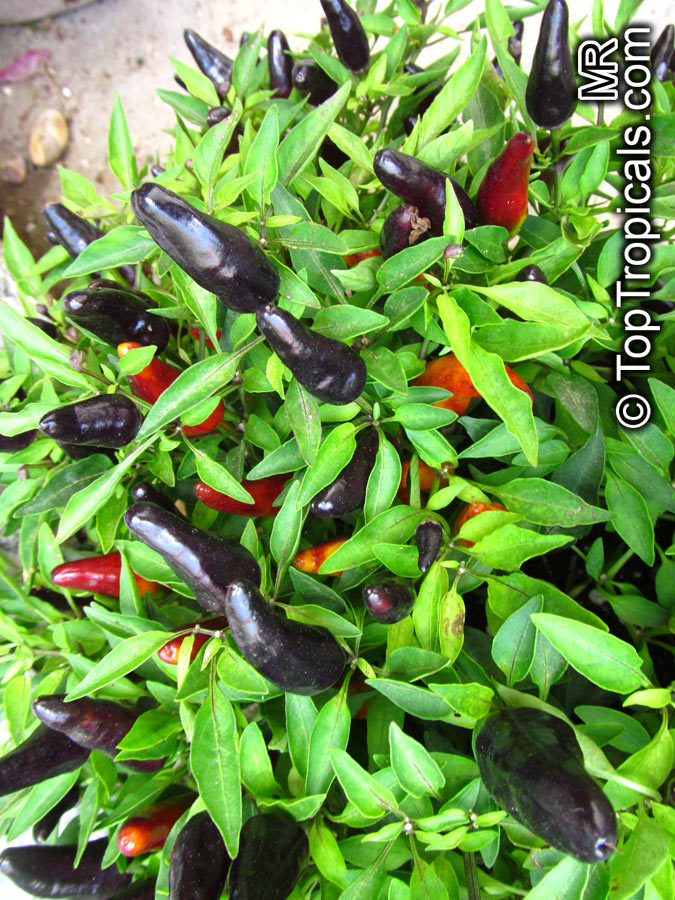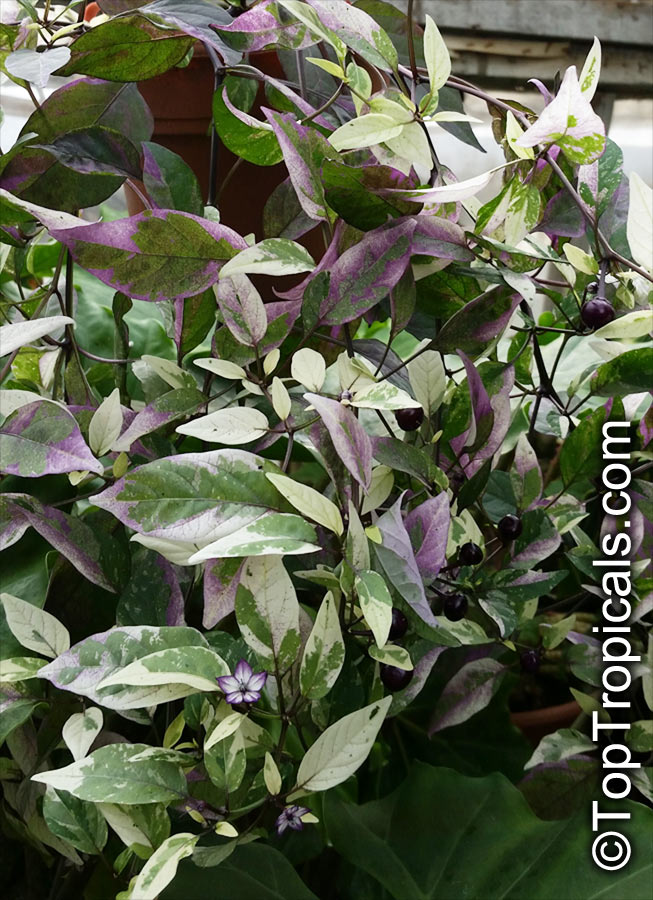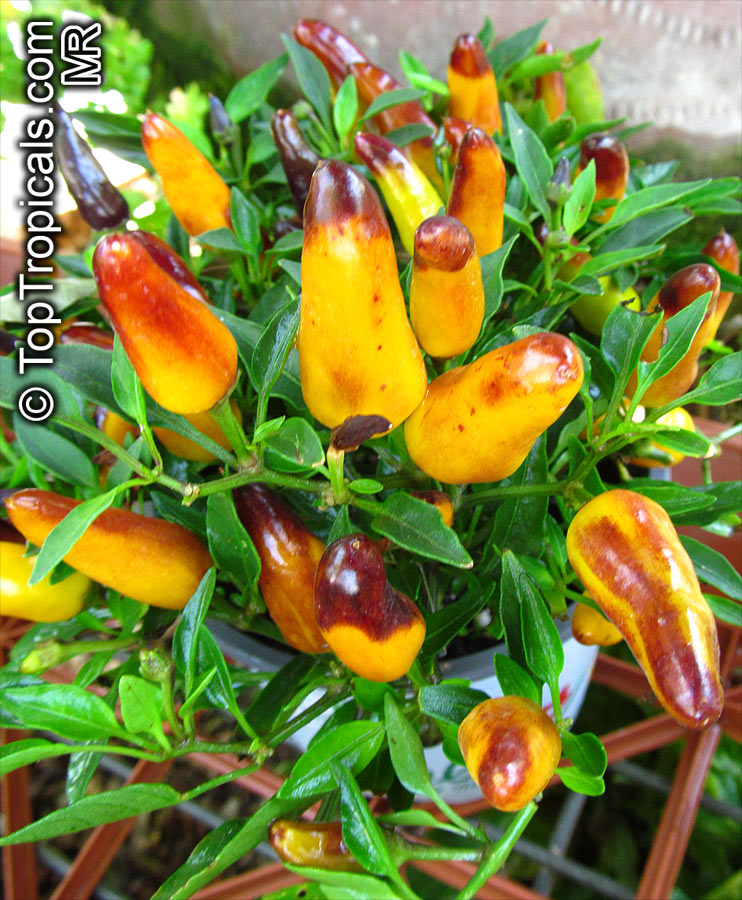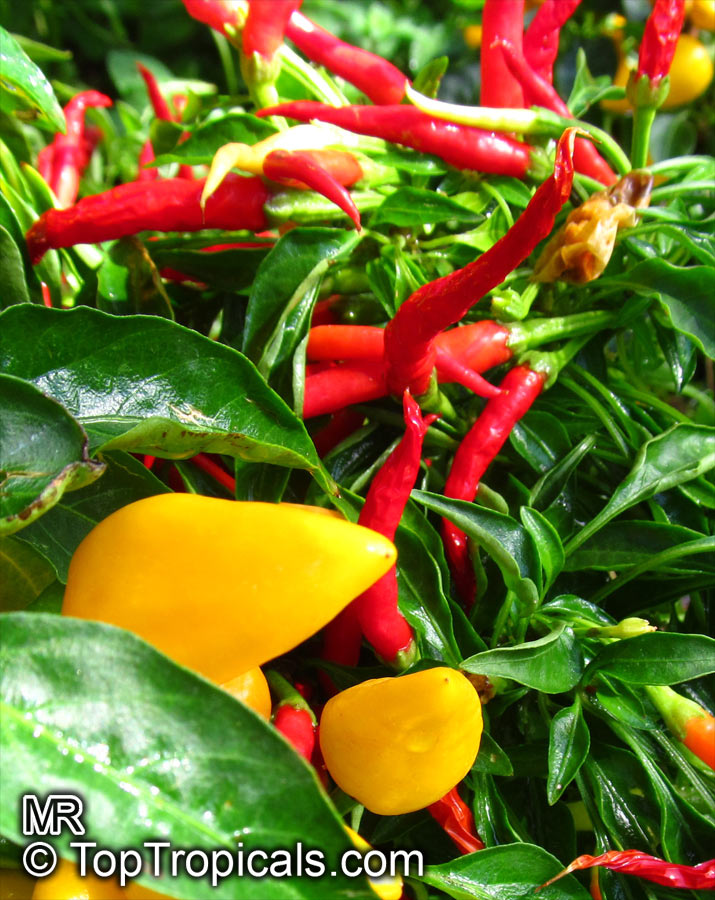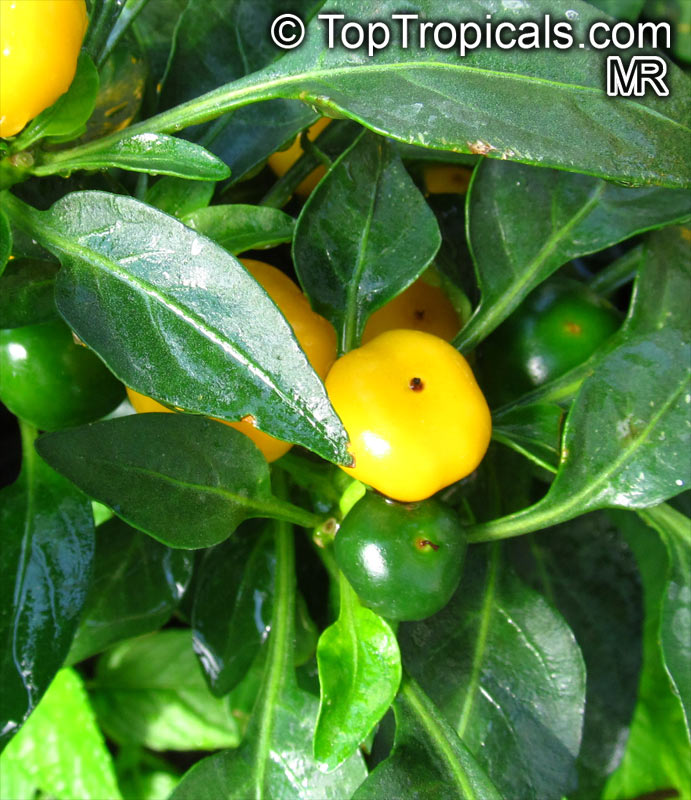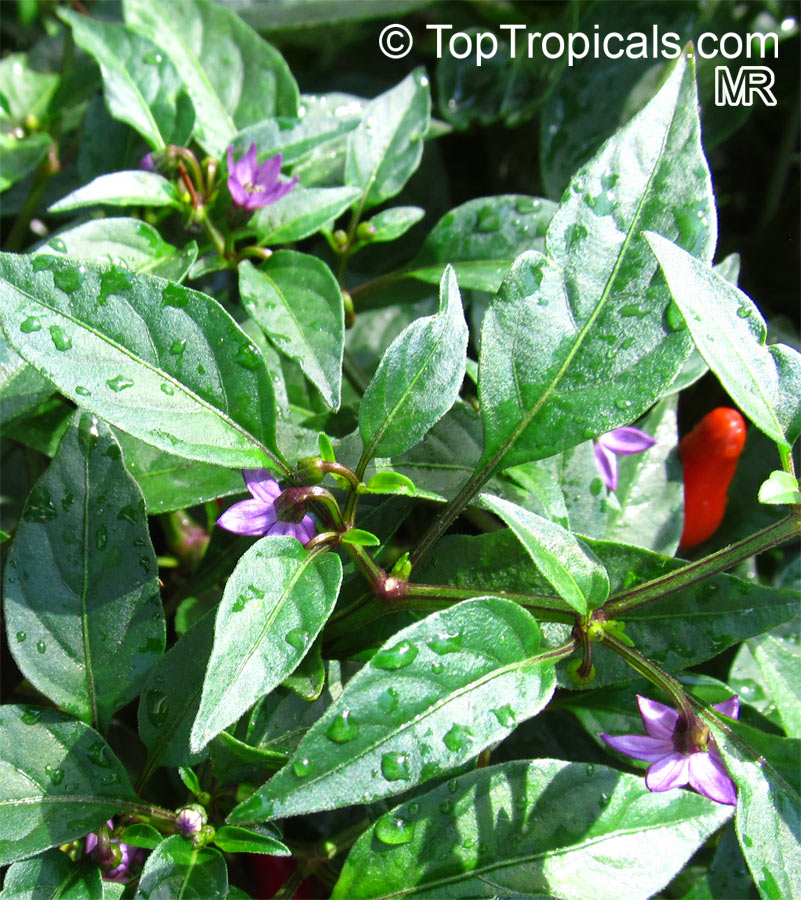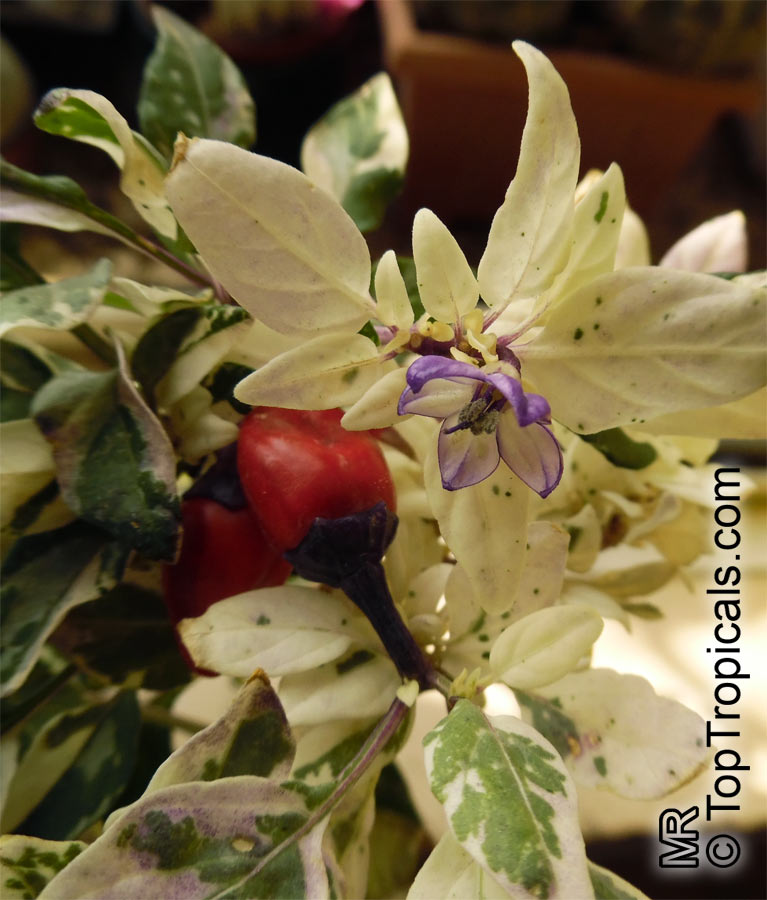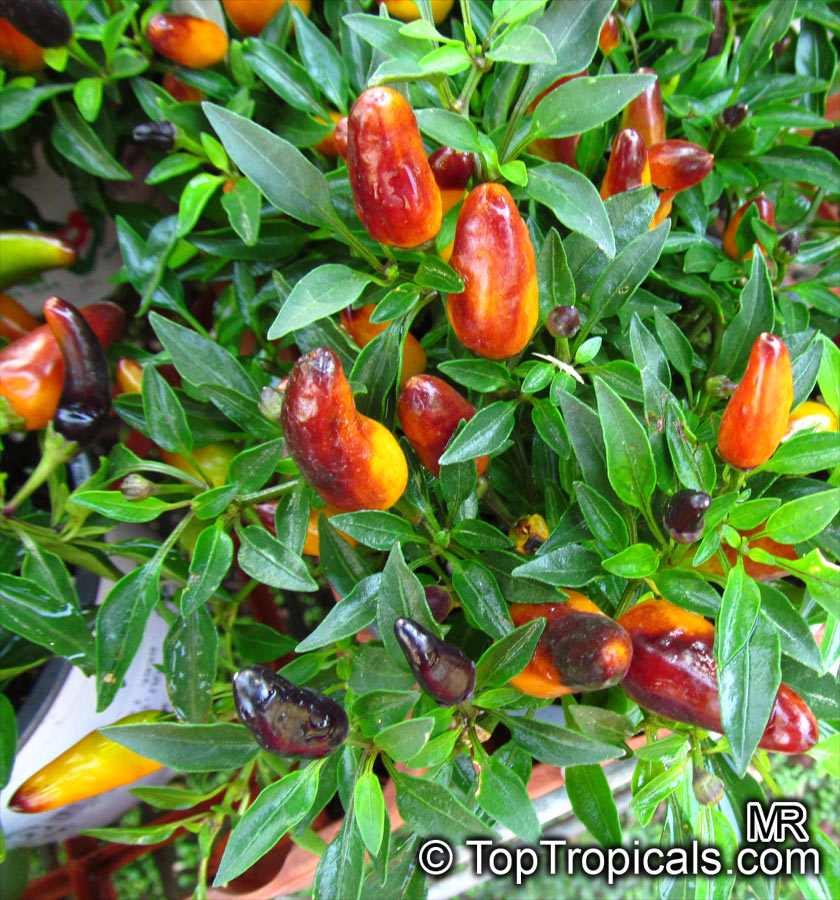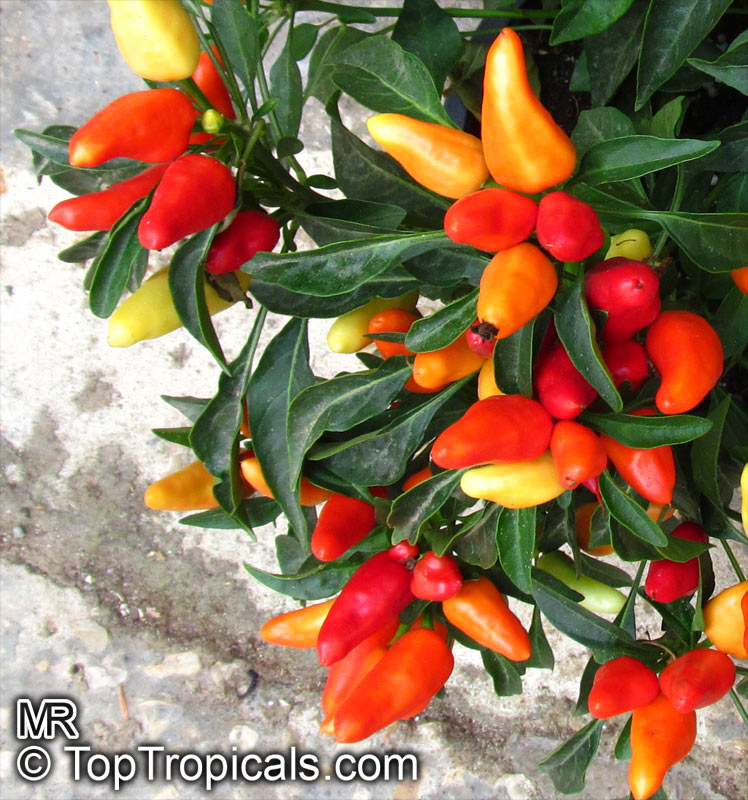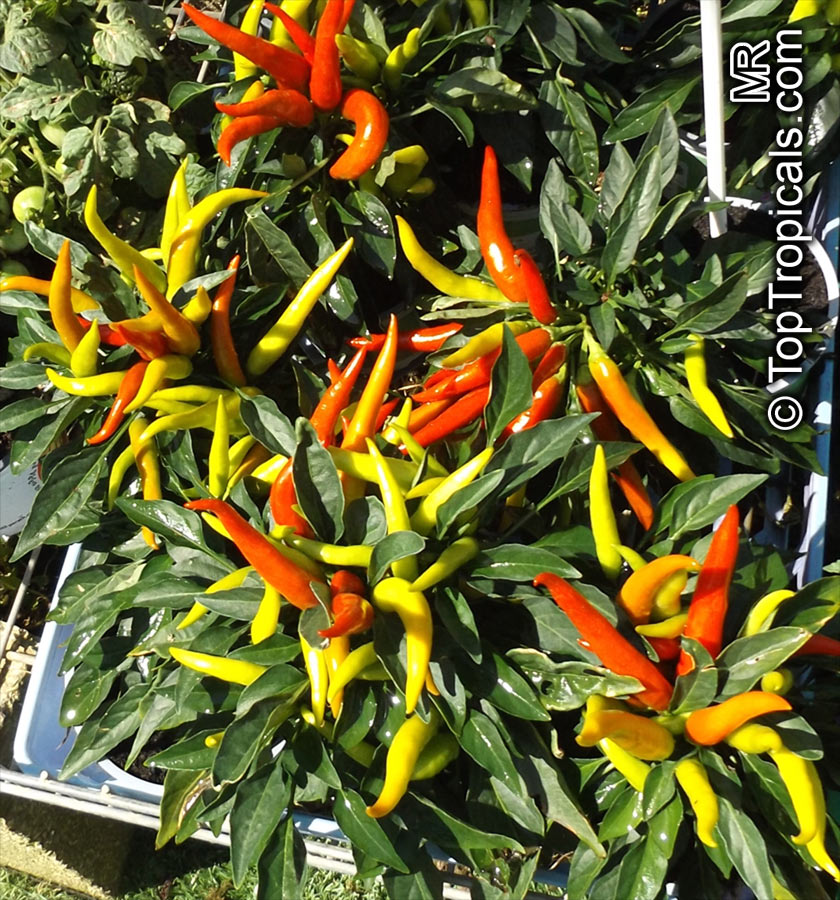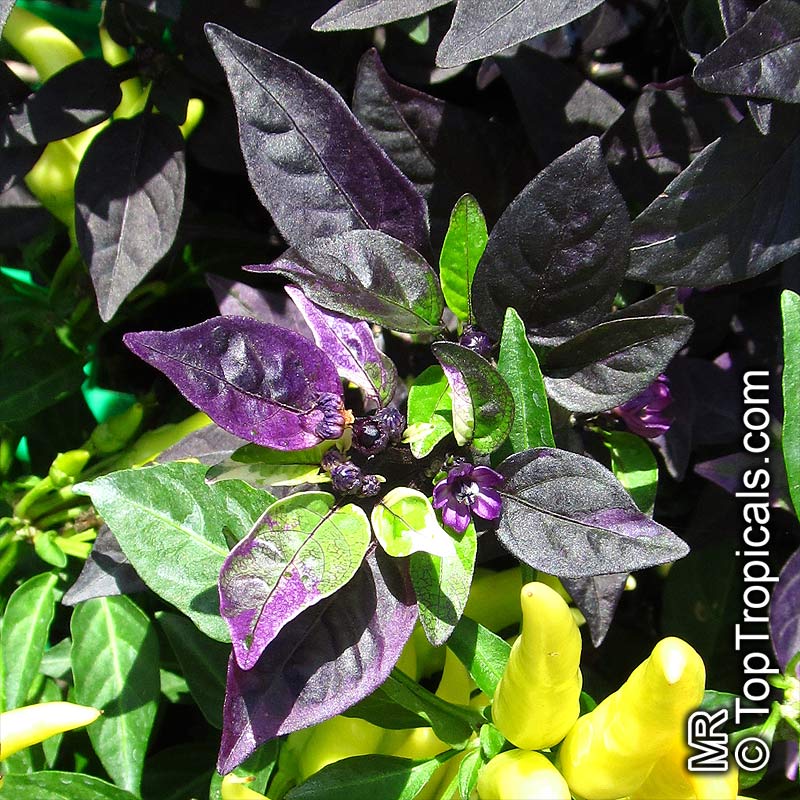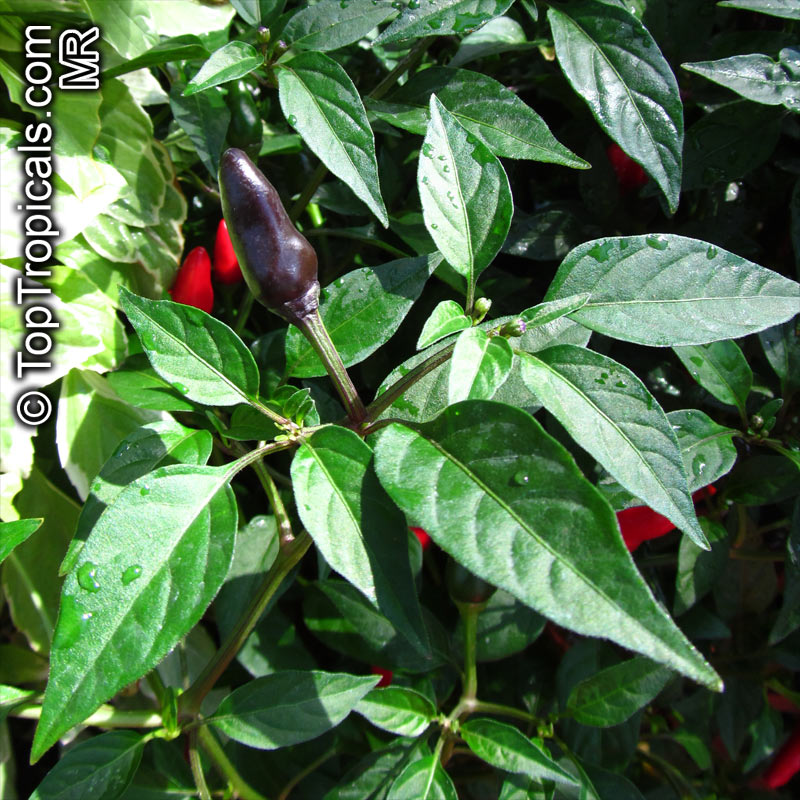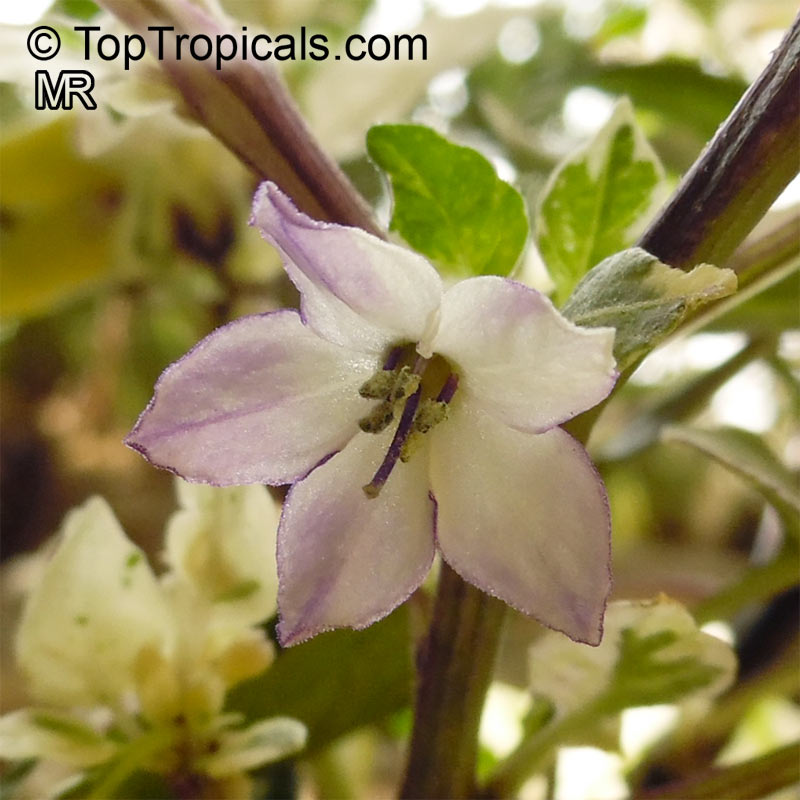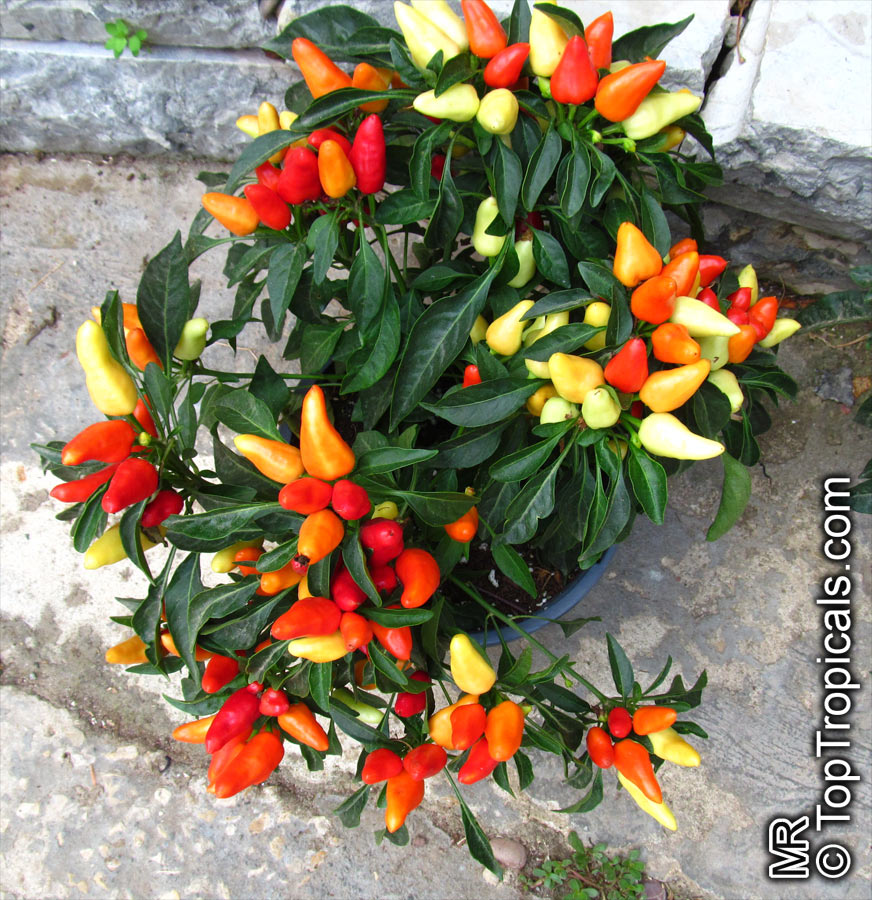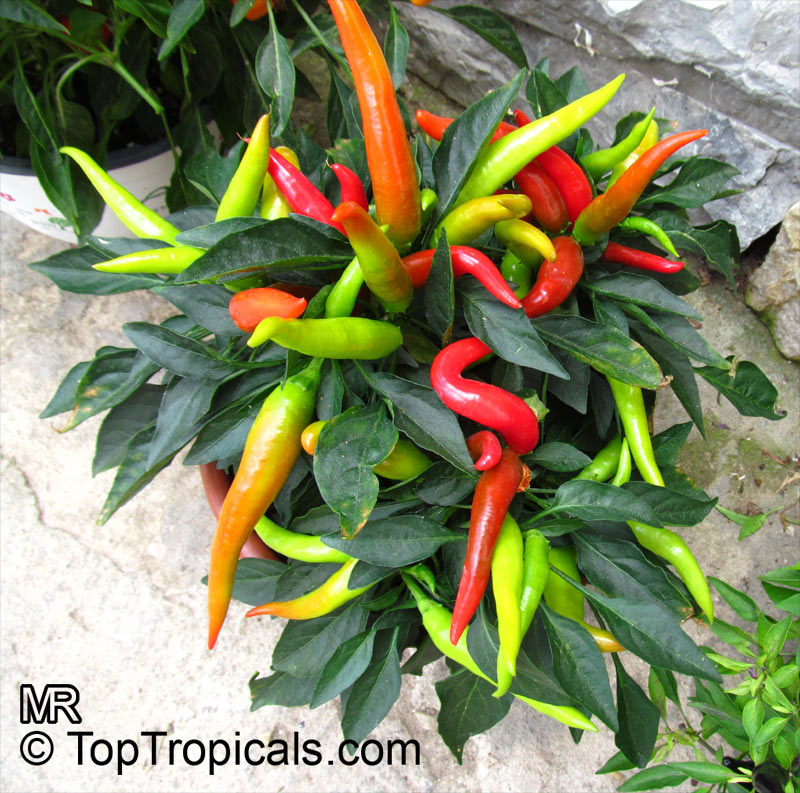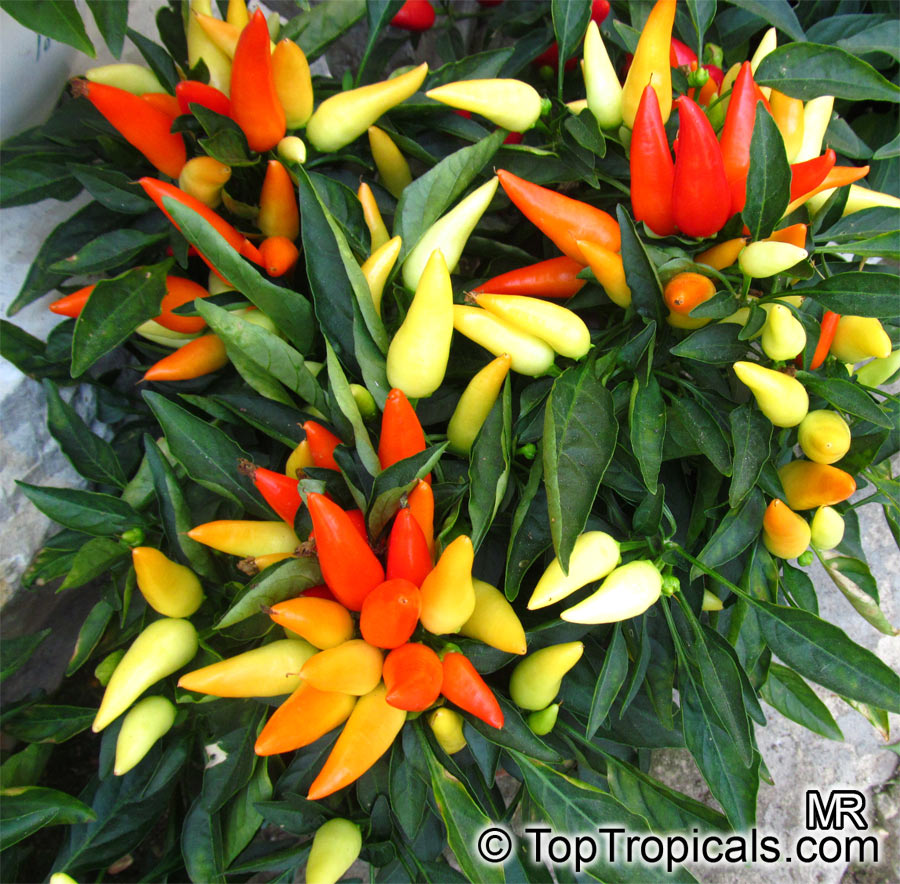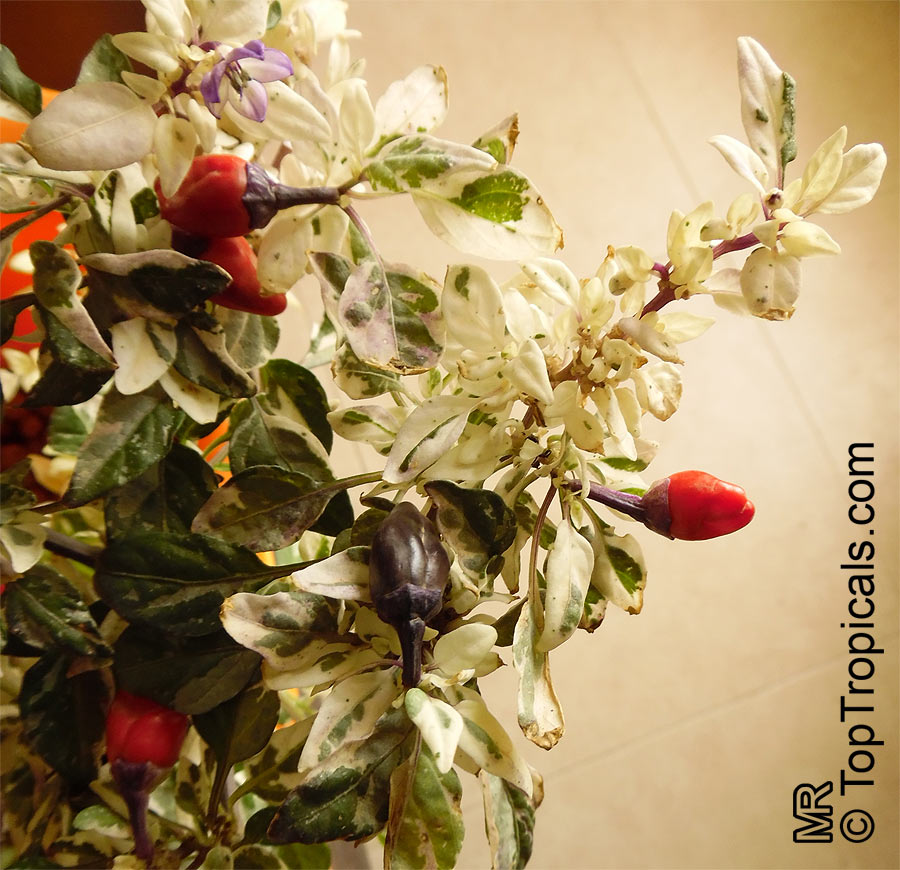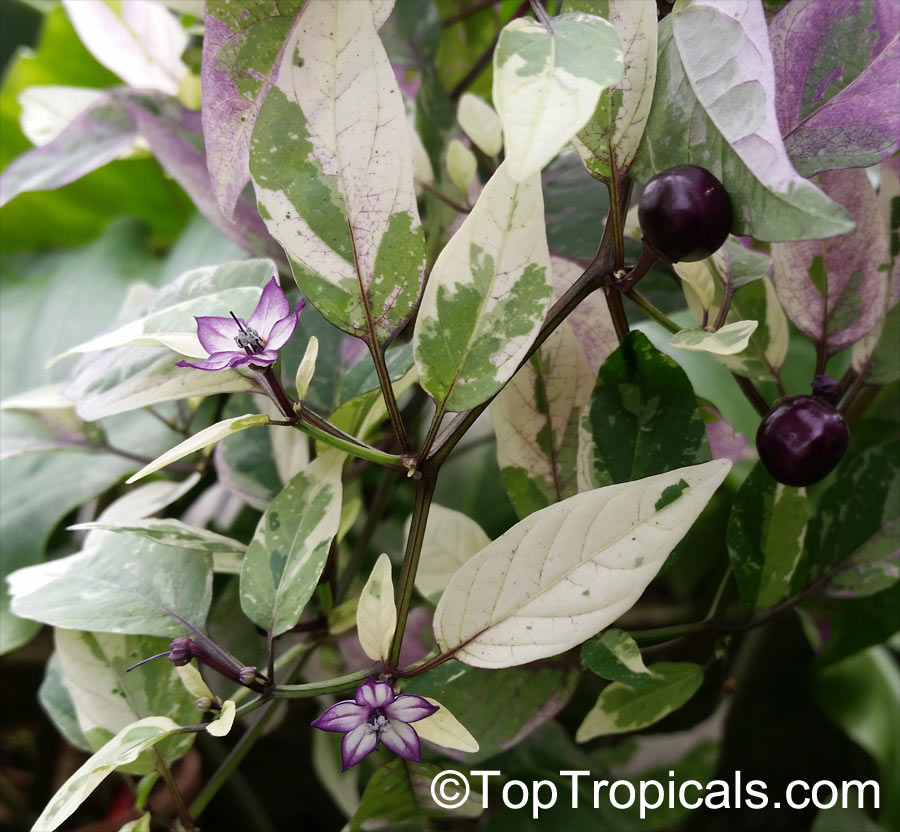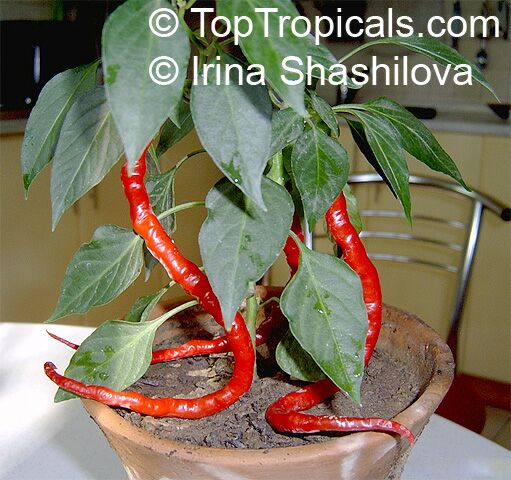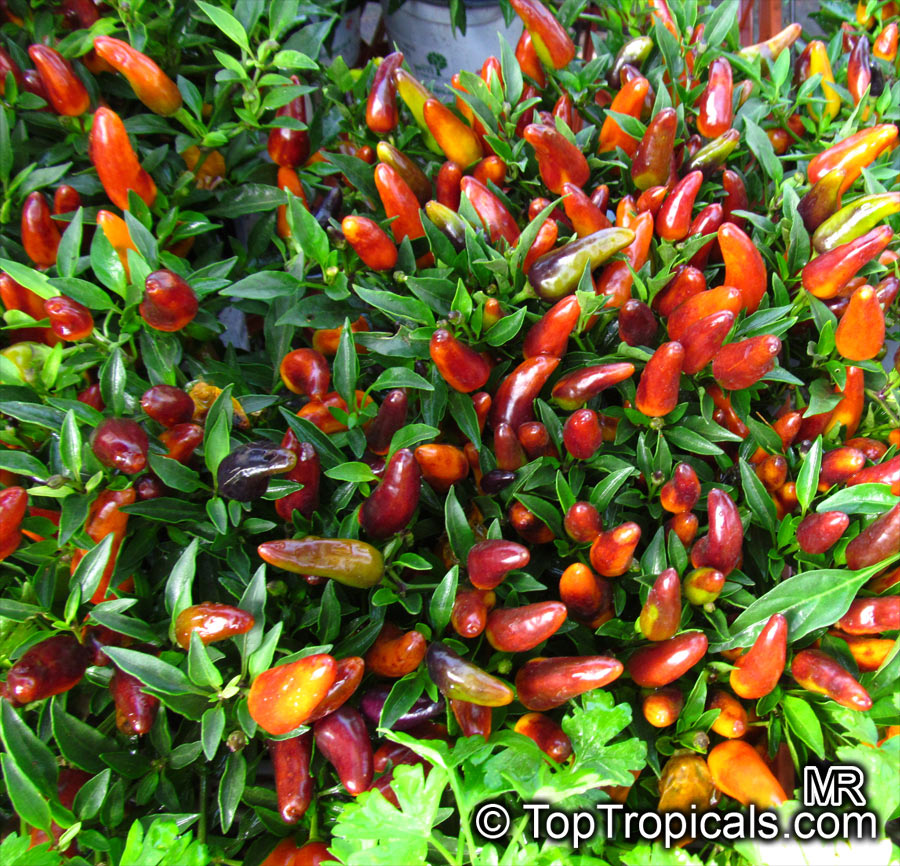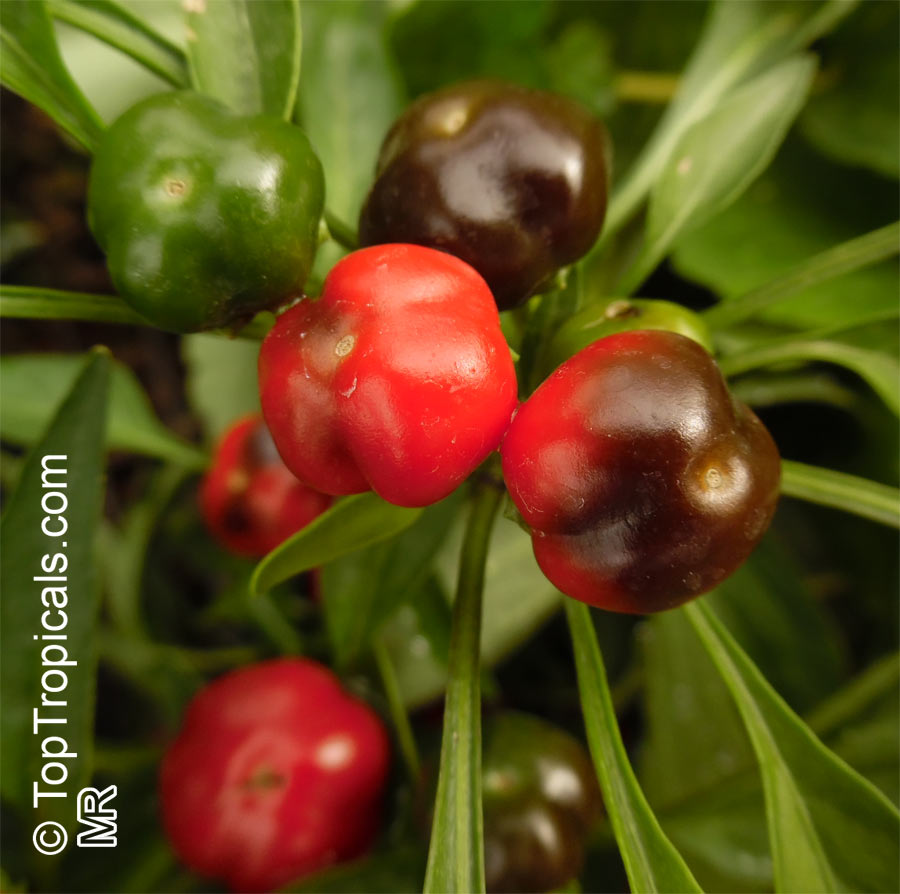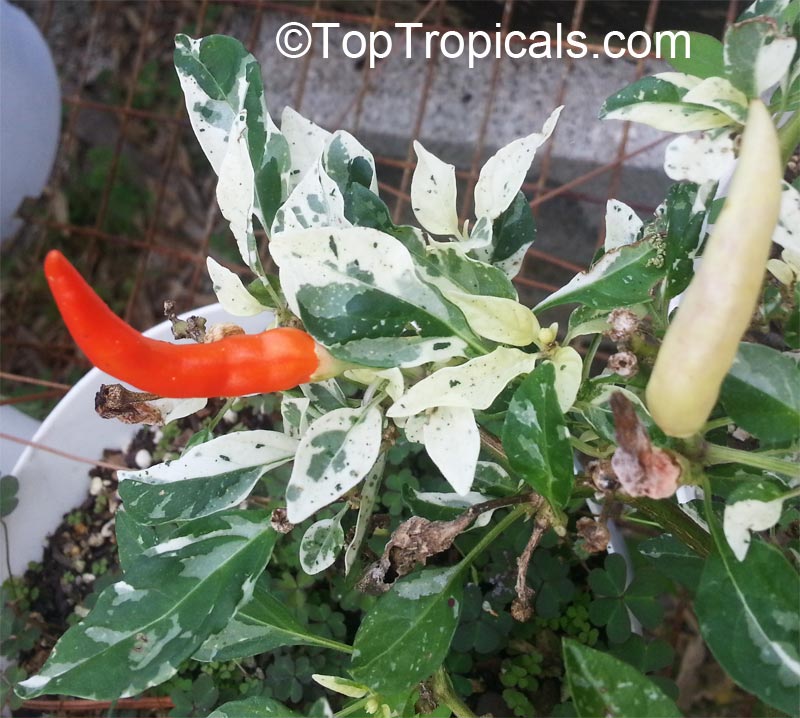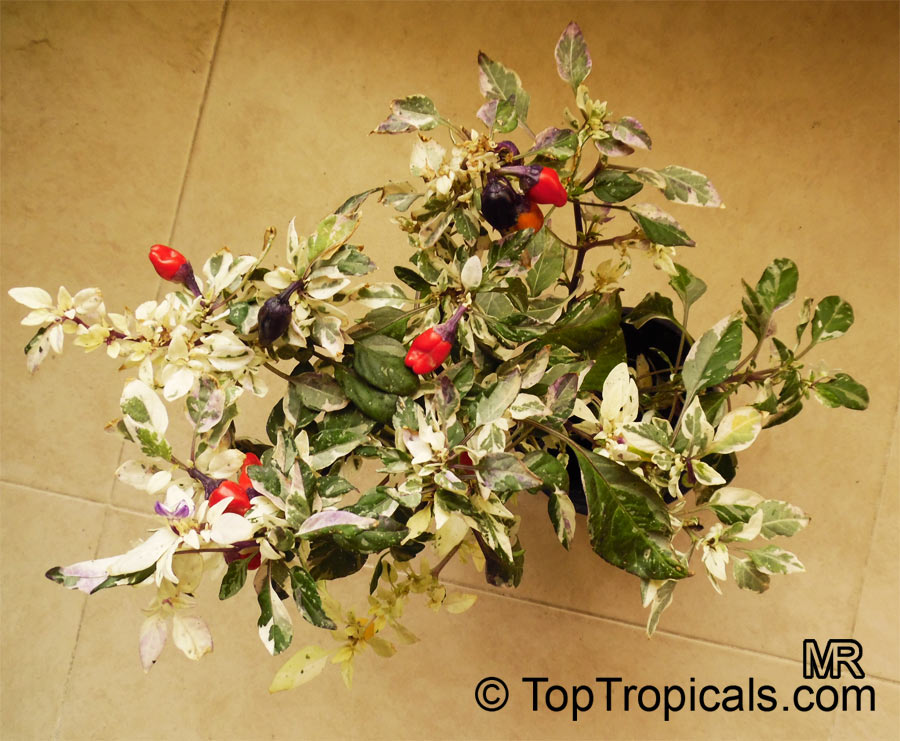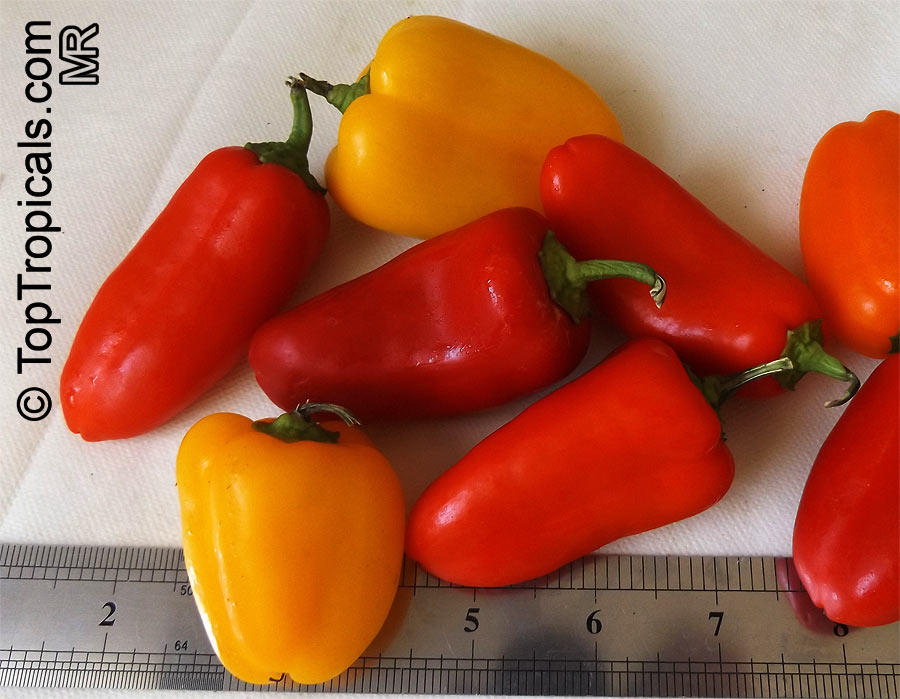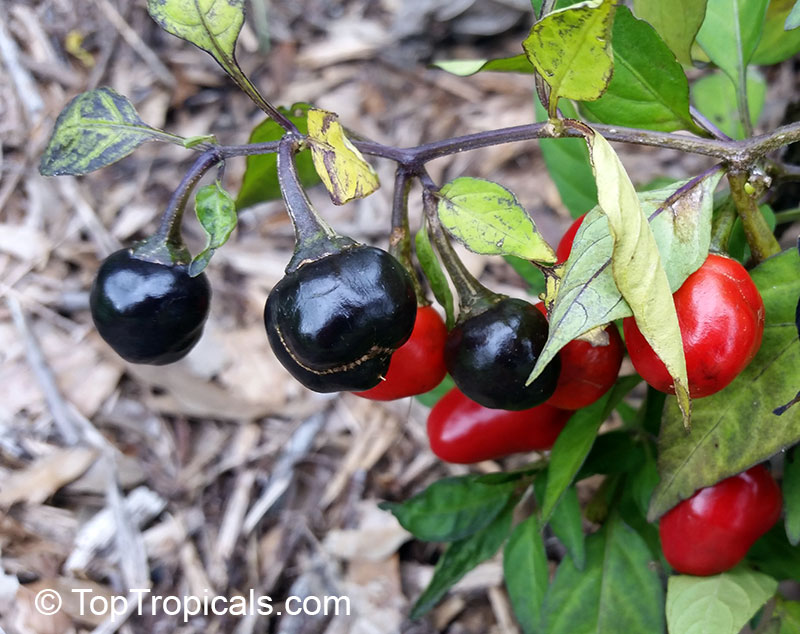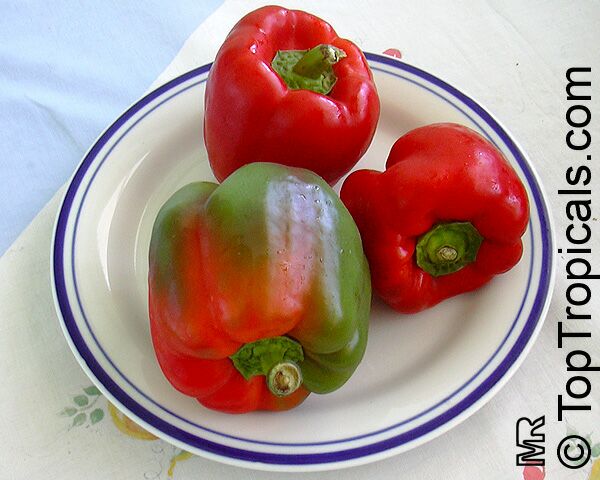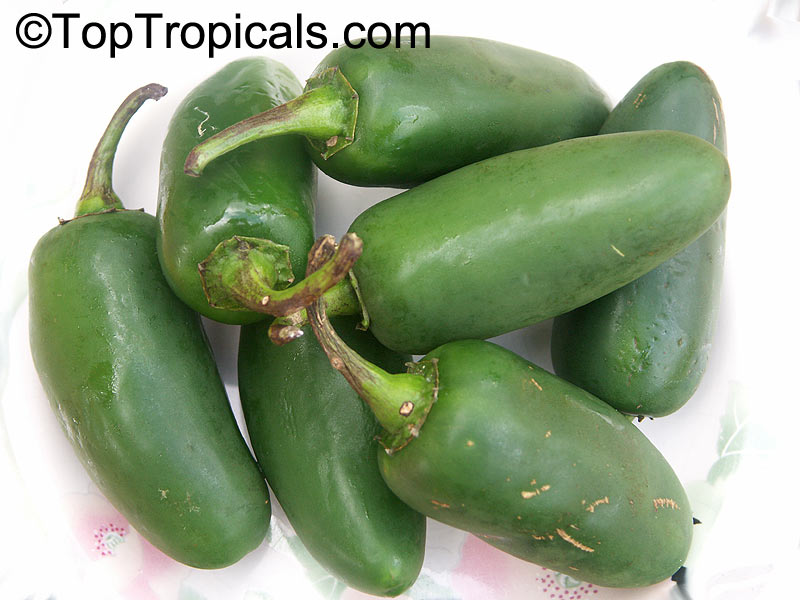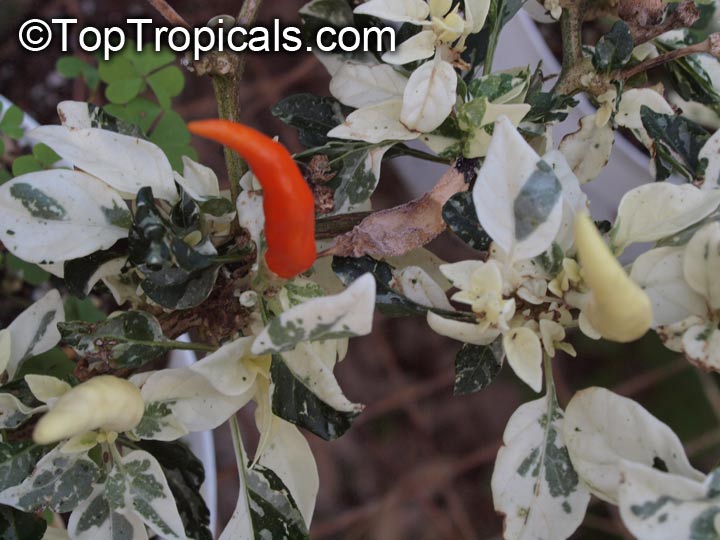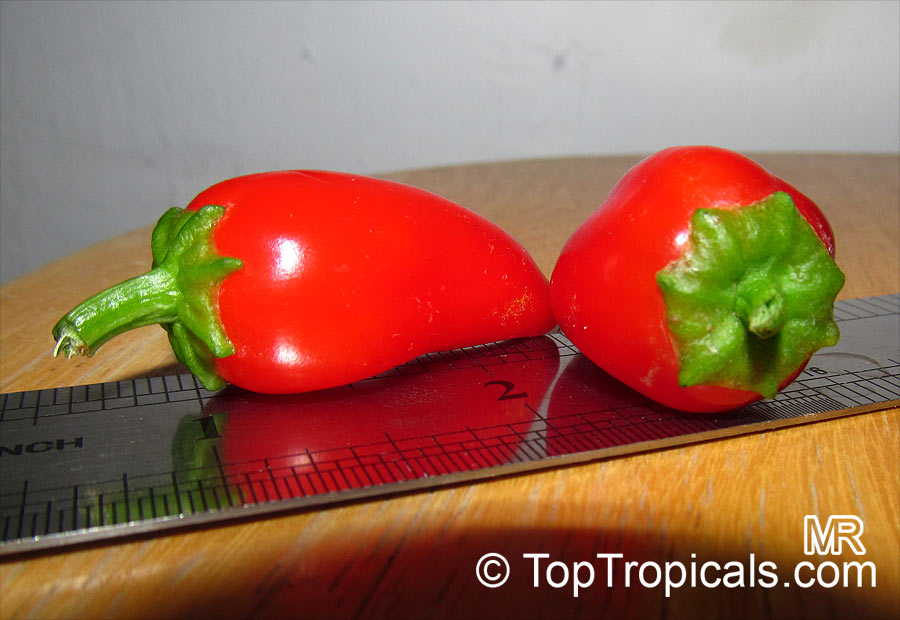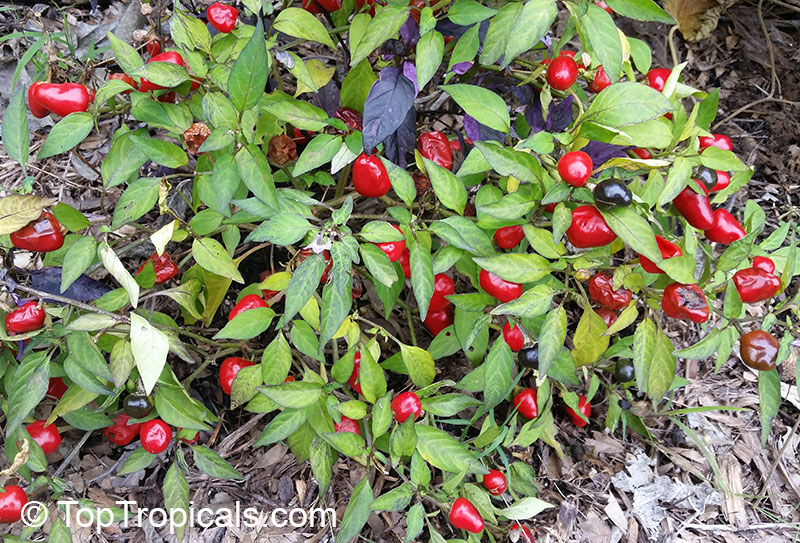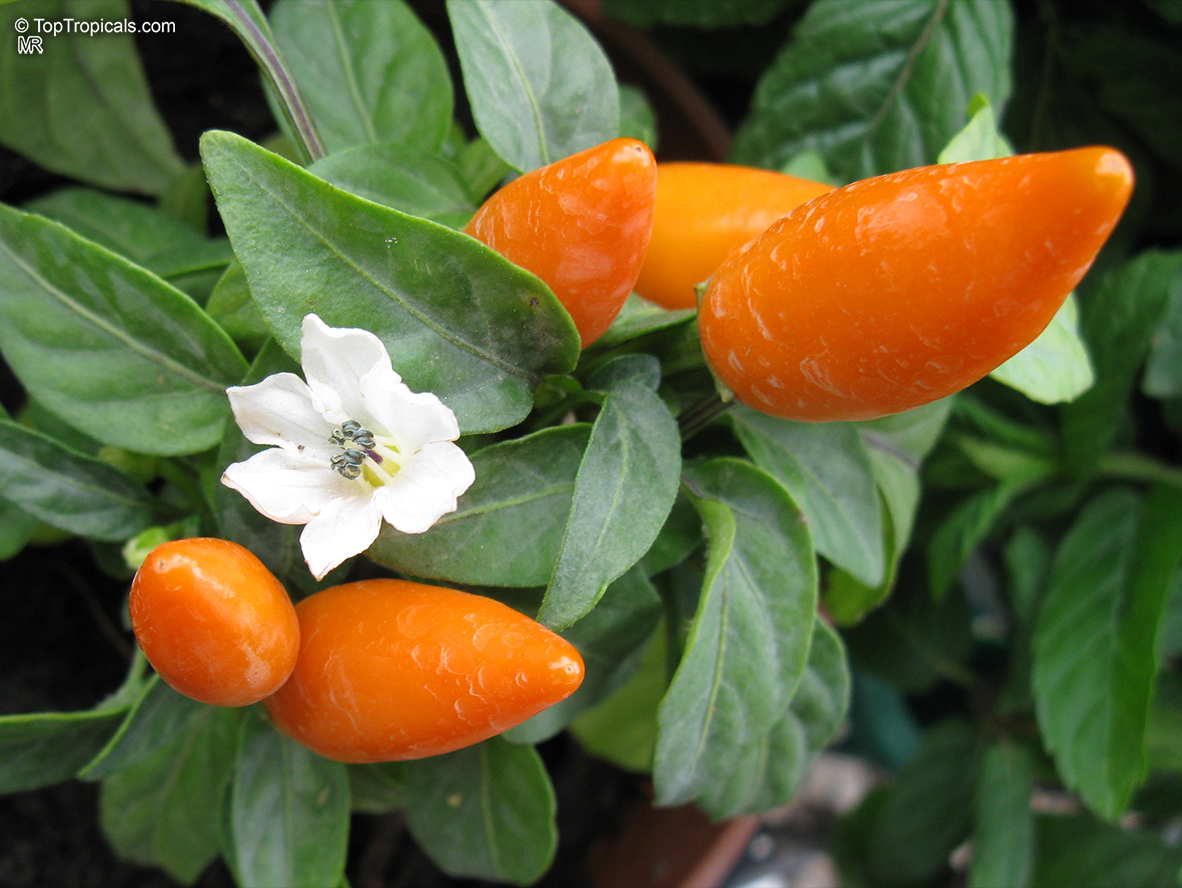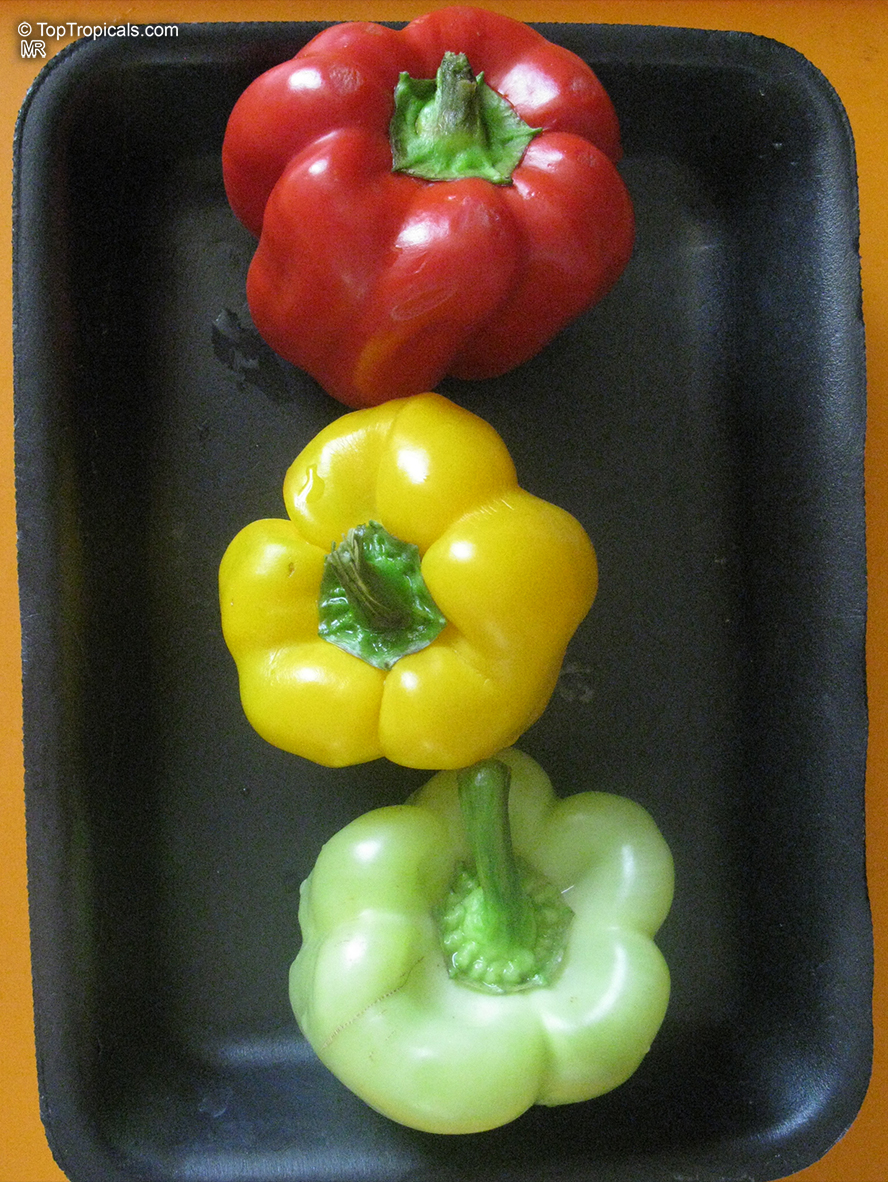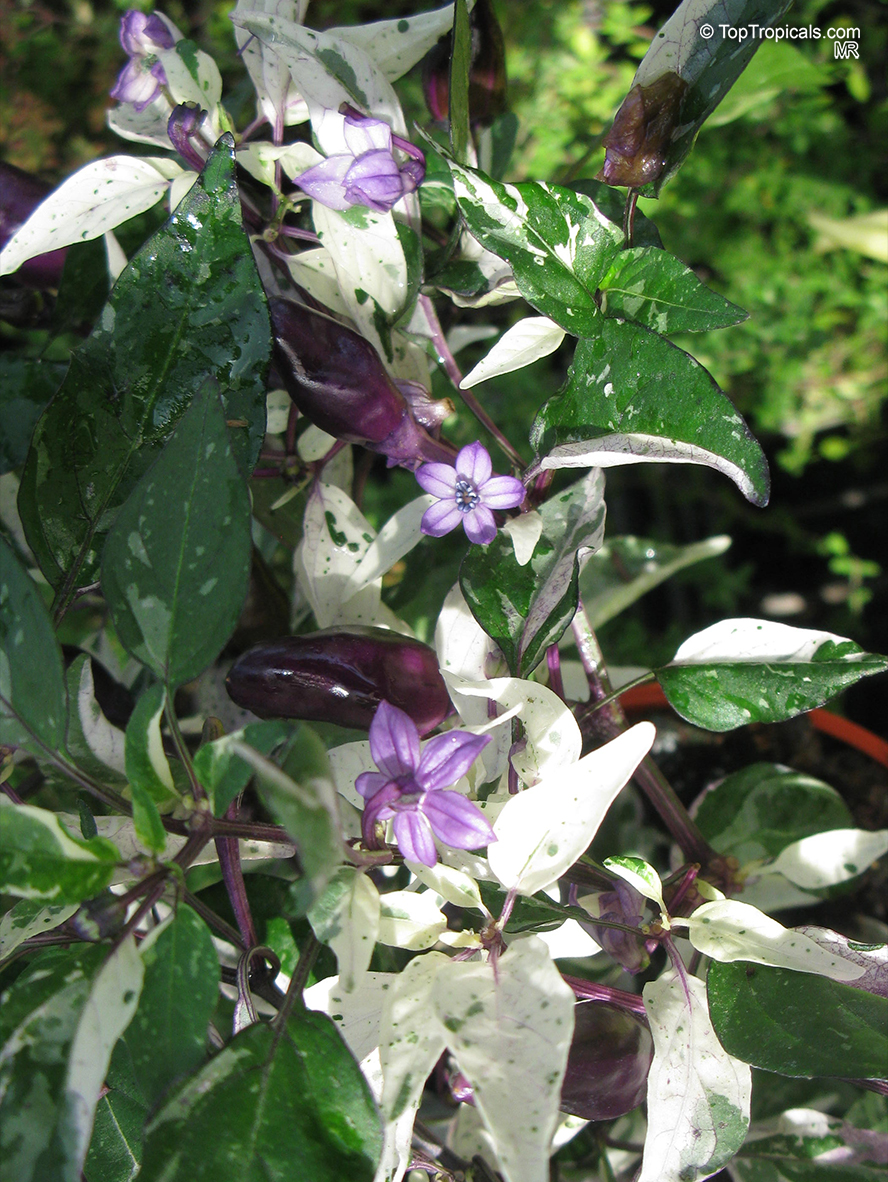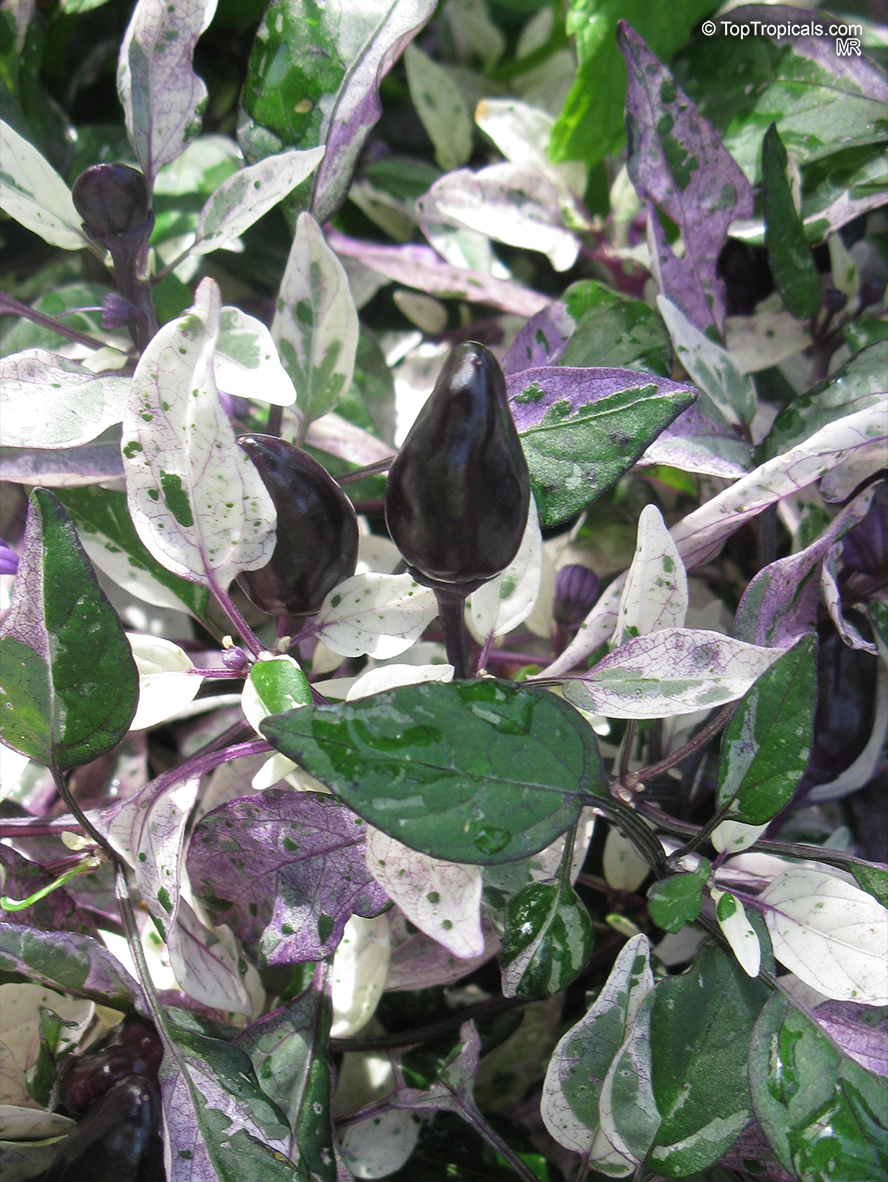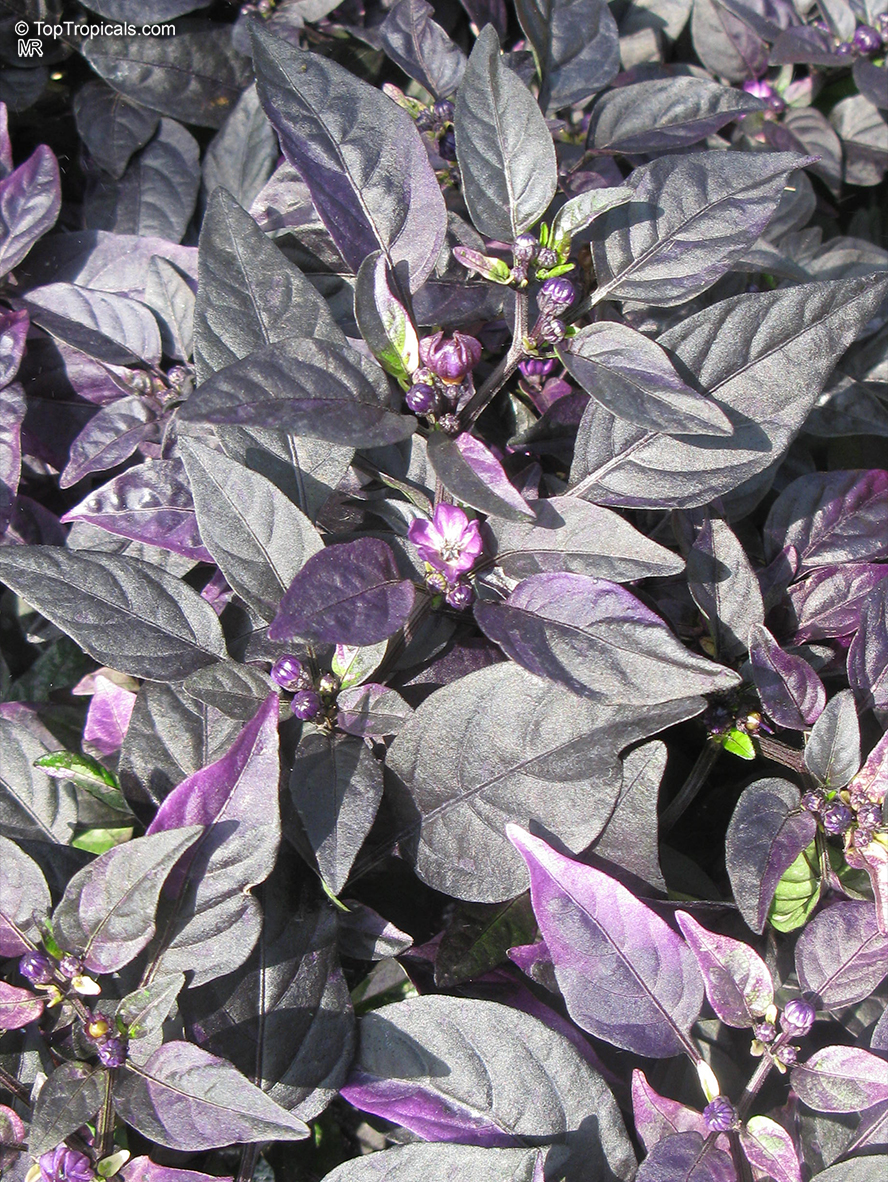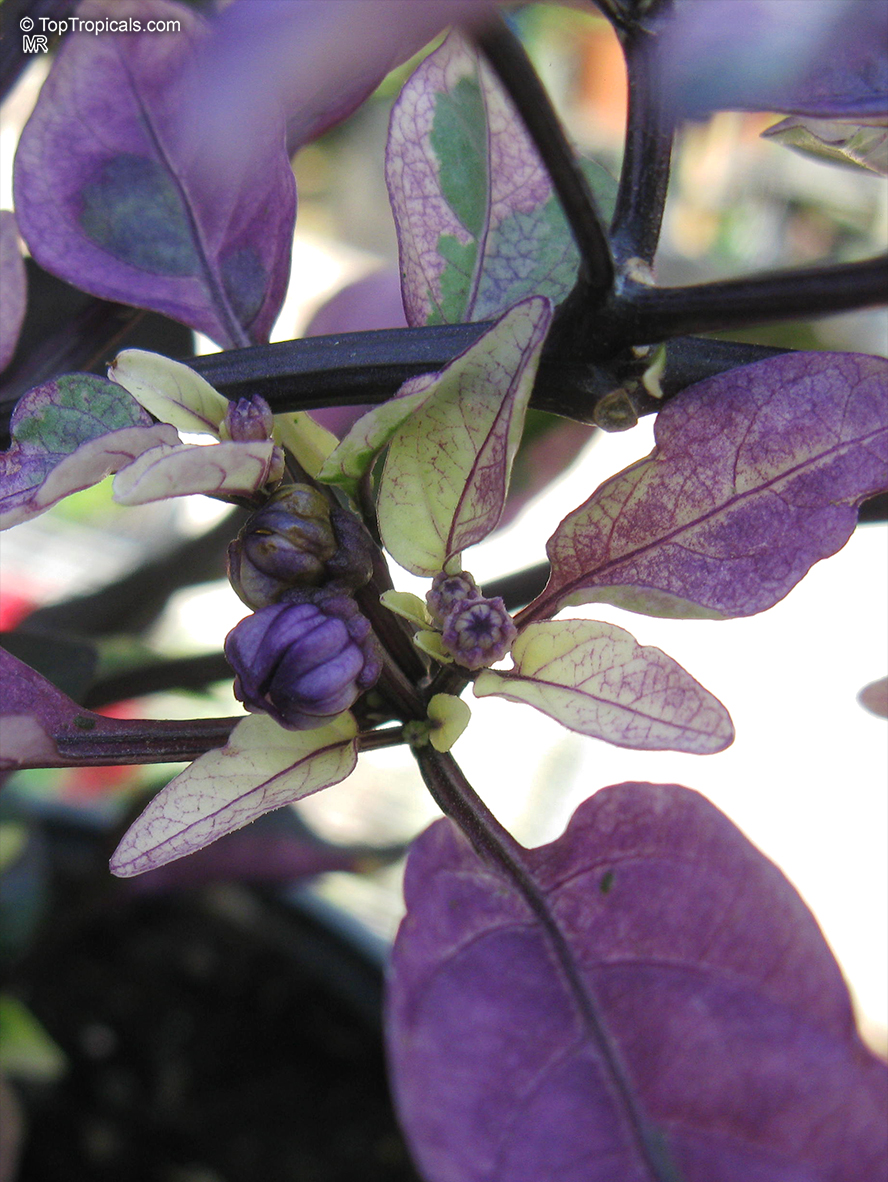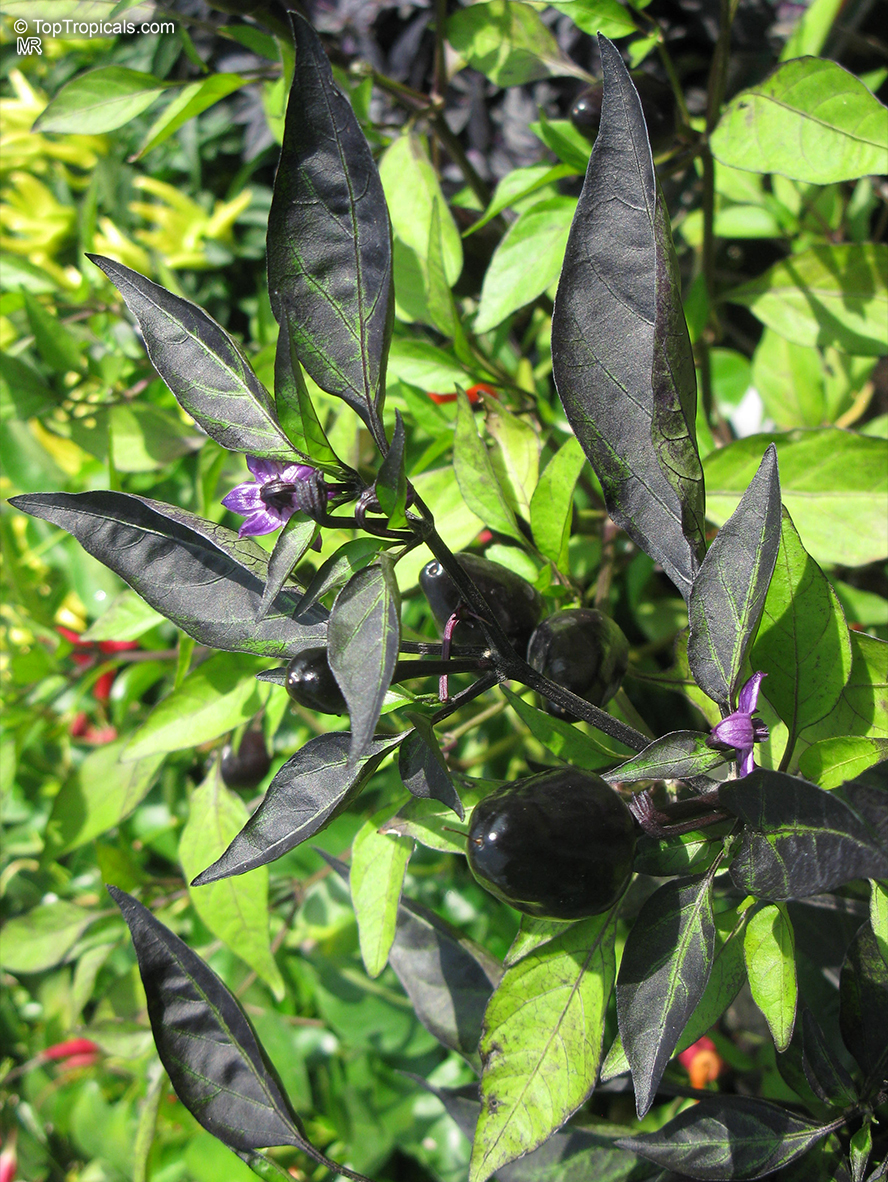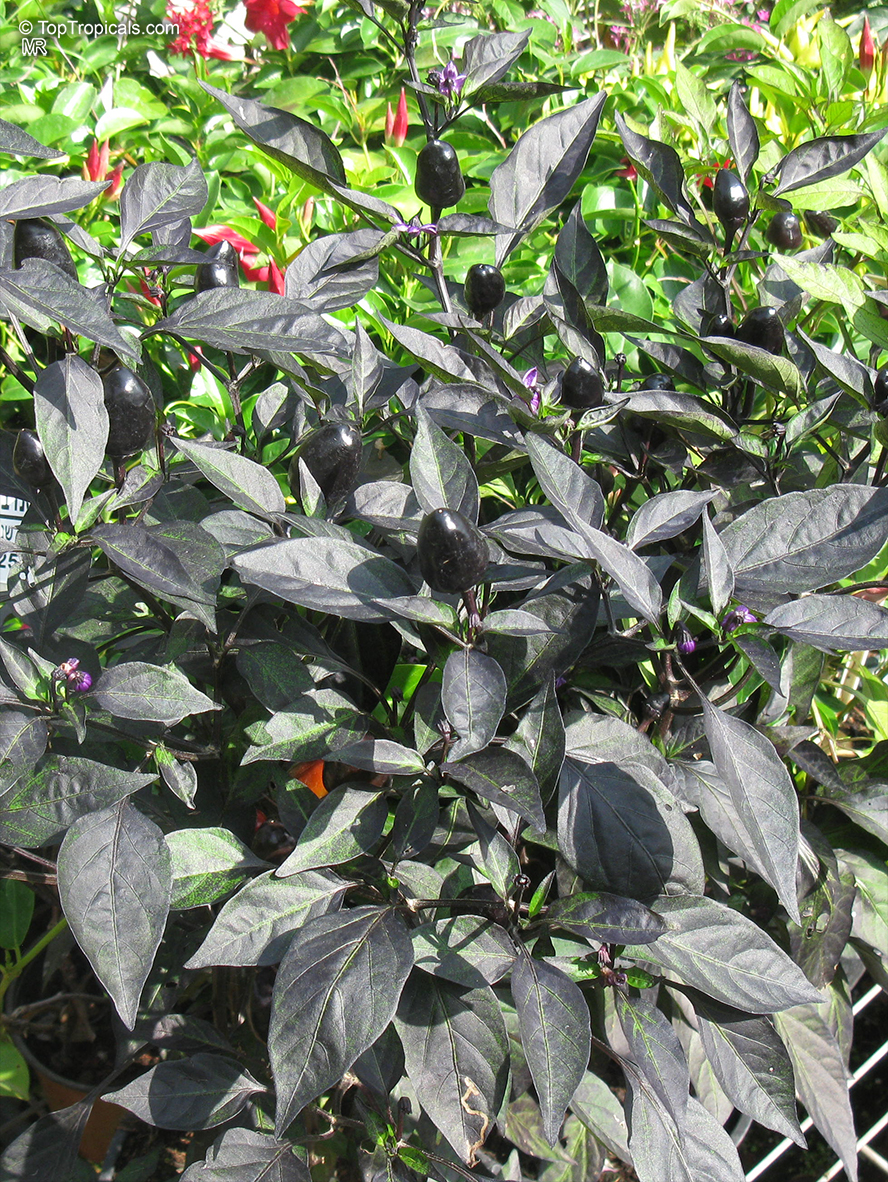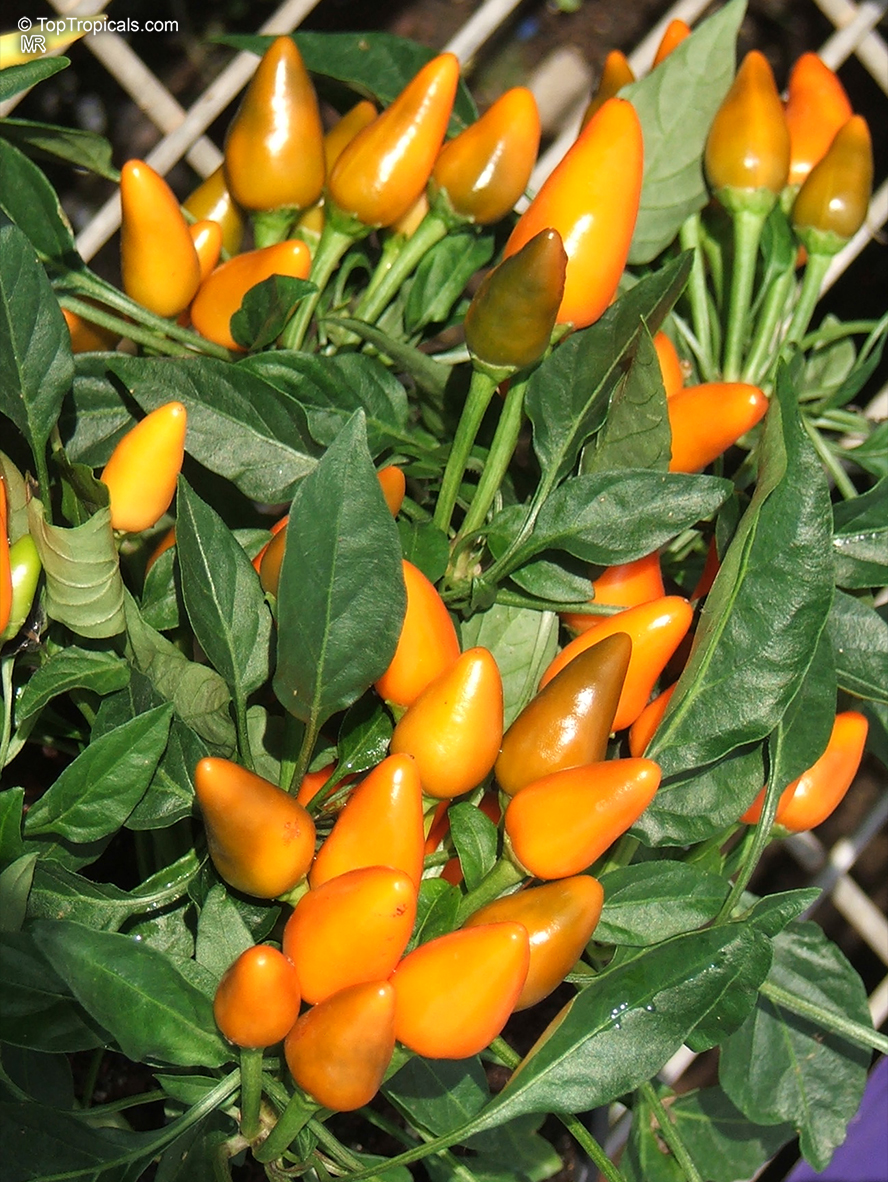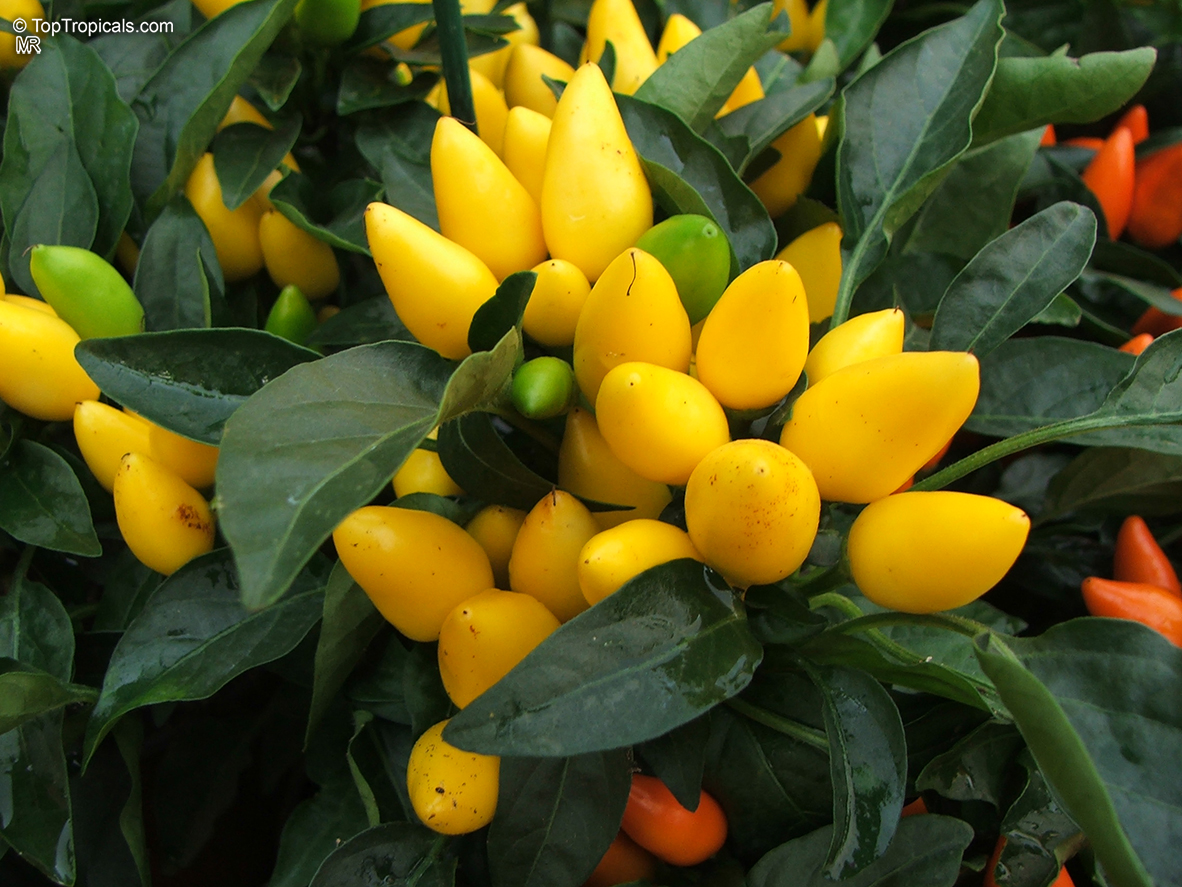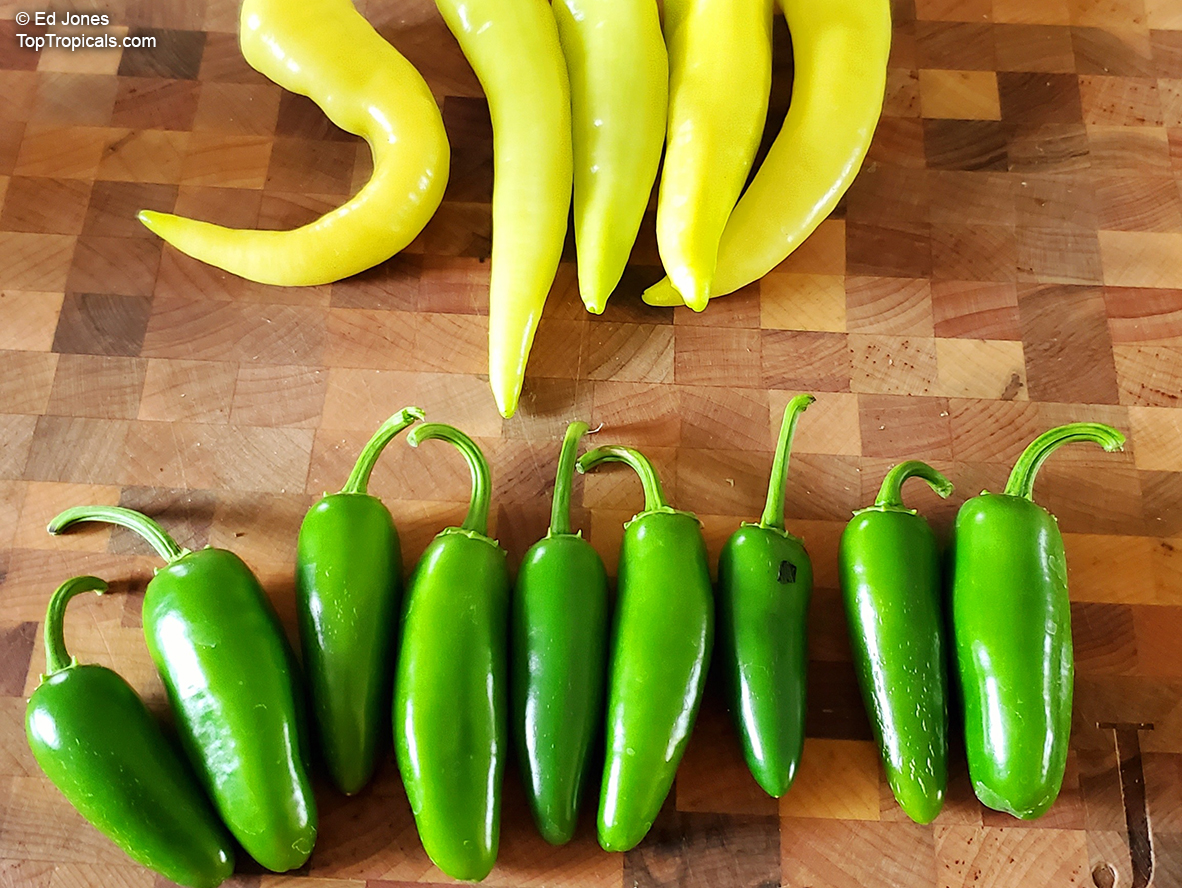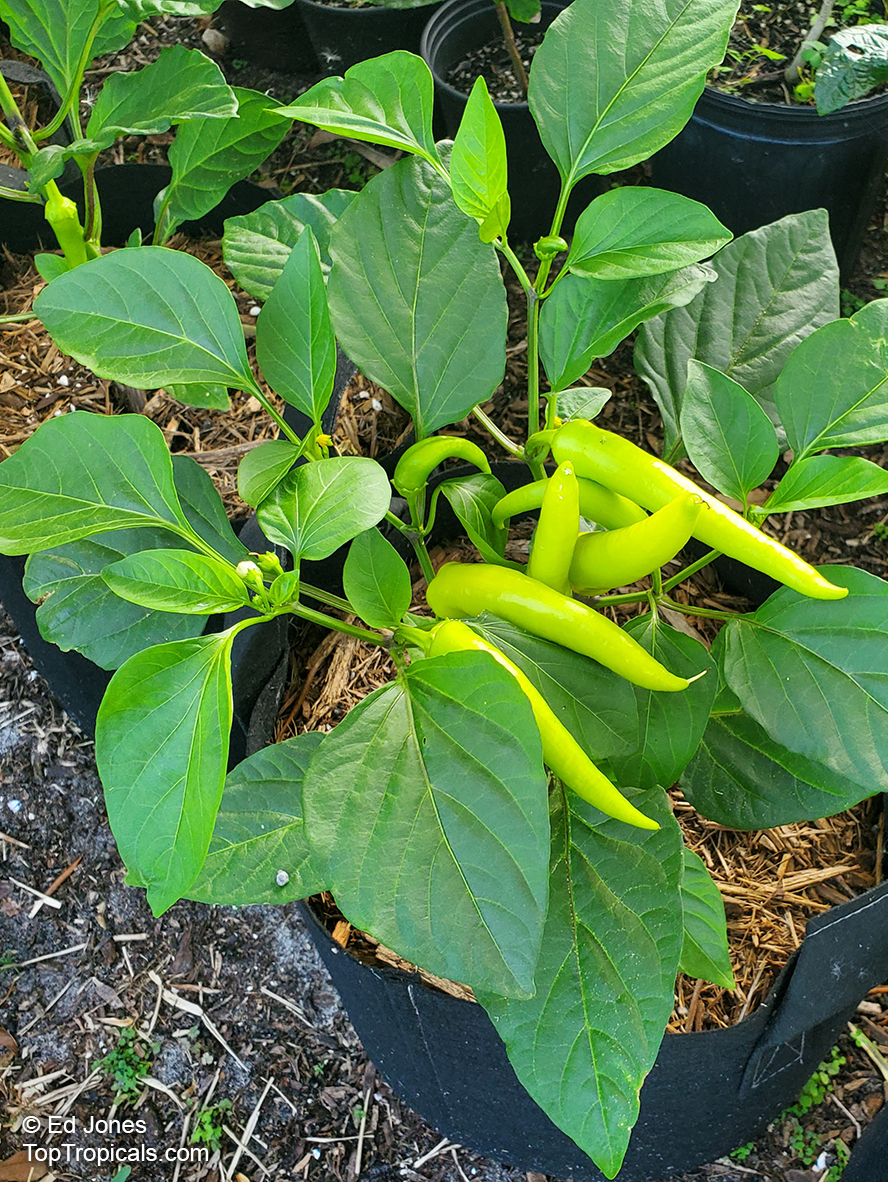Capsicum annuum (Sweet Pepper)
Top Tropicals Plant Encyclopedia
Botanical name: Capsicum annuum
Common names: Sweet Pepper, Chilli Pepper, Cayenne Pepper, Paprika, Ornamental pepper
Family: Solanaceae
Origin: South America









Capsicum annuum, native to South America, is a small shrub that reaches a height of 2-5 ft. It thrives in full sun and requires regular watering. Its white and off-white flowers give way to colorful 1 to 2 inch fruits that can be black, red, white, yellow, or cream. While the plant is an irritant if touched and an ethnomedical plant, its fruit is edible and highly nutritious.
The mature plants are cold hardy at least to 30s F for a short time, making them suitable for growing in USDA Zones 4 -10. When provided with ample sunlight and water, Capsicum annuum can produce fruits throughout the summer until the first frost. Its fruits are known to be rich in vitamins, minerals, and dietary fiber. They also have a wide range of health benefits, such as improved digestion, relief from cardiovascular diseases, and boosted immunity. A single plant can produce up to 50 fruits depending on the size and health of the plant.
When growing Capsicum annuum in regions with a cold climate, it is essential to keep the pot indoors during the winter months. During these months, the pot must be placed in a warm, sunny location and watered rarely to prevent root rot. Once the summer months arrive and the danger of frost has passed, the plant should be moved outdoors where it can receive regular water and adequate sunlight.
